![]() Rocket_Image_Kugeln_04_Janik_Gensheimer_eciRGBv2
Rocket_Image_Kugeln_04_Janik_Gensheimer_eciRGBv2
Text
I r e n R u s s o
How did you get into photography?
For a school project I started to dig into abstract photography. I got all the books I could get my hands on from the library and spent all summer learning as much as I could about it. In autumn I tried all kinds of abstract photography experiements in my black-out room.
![]() Janik_Gensheimer_03_City_of_Arts_DSC0559_01
Janik_Gensheimer_03_City_of_Arts_DSC0559_01
Can you tell us about the process of making your work?
First of all it needs a great idea. No matter if it’s for a personal project or a job with certain requirements, the idea and the concept are the most important part for a coherent series.
My aim is to implement each job in a way that it’s good enough to make it into my portfolio. I want to create photographs that touch the viewer and create emotions. This cannot be done only through great execution. The content of the picture has to be compelling, has to be new, and polarizing. My photograph is a good one when it makes the viewer pause and provokes a reaction. This is what I’m going for in every photograph I create.
When it comes to architecutal photography the process is a bit simpler. The preparation is a detailed analysis of the building and the location. I then decide on which time of day I have to where and in what weather conditions. Everything else is then created during the process of photography. I try to get a feel for the architect’s idea and bring the three-dimensionality into the two-dimensionality of photography through my clear and simple style. To me, the highest art in photography is to find a clear, unbiased perspective, in which I don’t influence (architectual photography is documentation) while still creating emotions.
![]() Arthur_Laing_Bridge_01X4953_01_Janik_Gensheimer_eciRGBv2
Arthur_Laing_Bridge_01X4953_01_Janik_Gensheimer_eciRGBv2
Do you have a favourite photograph or painting, which inspires you?
Untitled, 1992
Adam Fuss
Which photographer of the past would you most like to meet?
Man Ray
Have you ever had a moment when you questioned your career entirely?
thankfully not. I’ve always known that that’s gonna be my path and my passion.
What advice would you give to a young artist following in your steps?
My own path to being an artist is long from finished. Instead, I’d like to answer this question in regards to a path to photography.
![]() Doppelwort_Eierkopf_02_eciRGBv2
Doppelwort_Eierkopf_02_eciRGBv2
![]() Doppelwort_Fischmesser_02_eciRGBv2
Doppelwort_Fischmesser_02_eciRGBv2
![]() Doppelwort_Schaumschläger_02_eciRGBv2
Doppelwort_Schaumschläger_02_eciRGBv2
![]() Temptation_black+white_01_eciRGBv2
Temptation_black+white_01_eciRGBv2
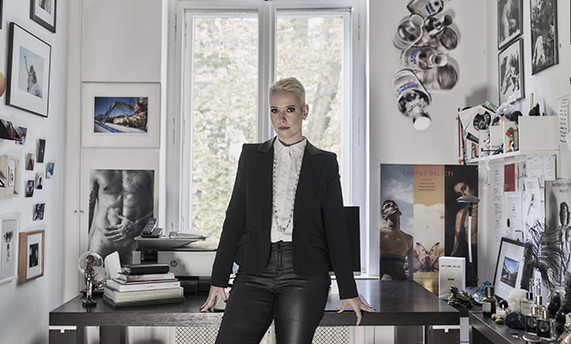
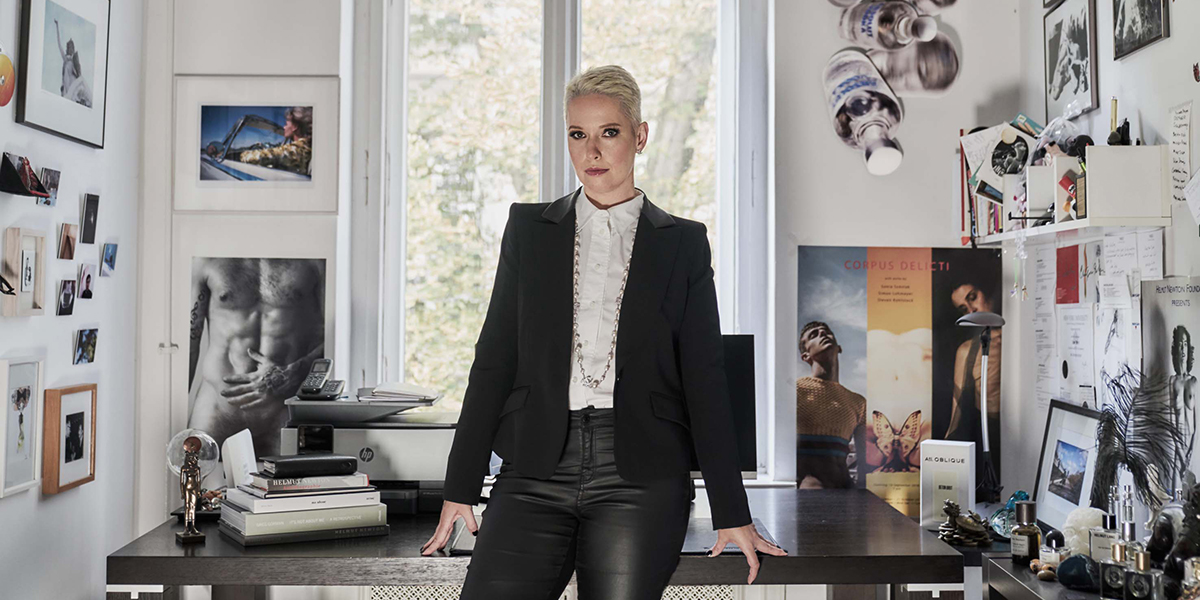
![]() photo: Steven Kohlstock
photo: Steven Kohlstock
Text
I r e n R u s s o
Can you tell us about your background in the arts, and how you ended up working as an independent PR agency specialising in photography and also as an art collector?
As long as I can remember, I have loved the arts. As a child, you would always see me with a piece of paper and a crayon; later I copied famous works like those by Franz Marc or visions of Venice. While I was doing my A-levels in art, I went to every museum show possible. After making my first steps in the business world, I moved to New York as I wanted to add some experience to my first two courses of study. In the summer of 2001, I enrolled at NYU to study art administration. I also got an internship at the renowned non-profit space White Columns, and immersed myself in the local art scene. Experiencing art and working with professionals really helped me to navigate through the overwhelming New York art scene.
I strongly believe that doing and creating have always been more valuable for me than just reading and listening. Theorie vs. Praxis, as we say in German. Internships and project experiences helped me find the kind of work I wanted to do. After New York came an internship at Boris Abel Kunst, then work at C/O Berlin, followed by a job at Asperger Gallery, then one at Alexander Ochs Berlin/Beijing. In 2006, I was ready to strike out on my own and founded my PR agency. As a lover of photography and avid photographer myself – this quickly became the focus my activities: promoting photography exhibitions for galleries, museums, and artists. During the early years, I often accepted art pieces as part of my payment; later, I bought art that “spoke to me” – at art fairs, during studio visits, even at flea markets. I have also received work from artists as a token of appreciation for my services. So you could say that art collecting came with the job, or is a pleasant side effect of my PR work.
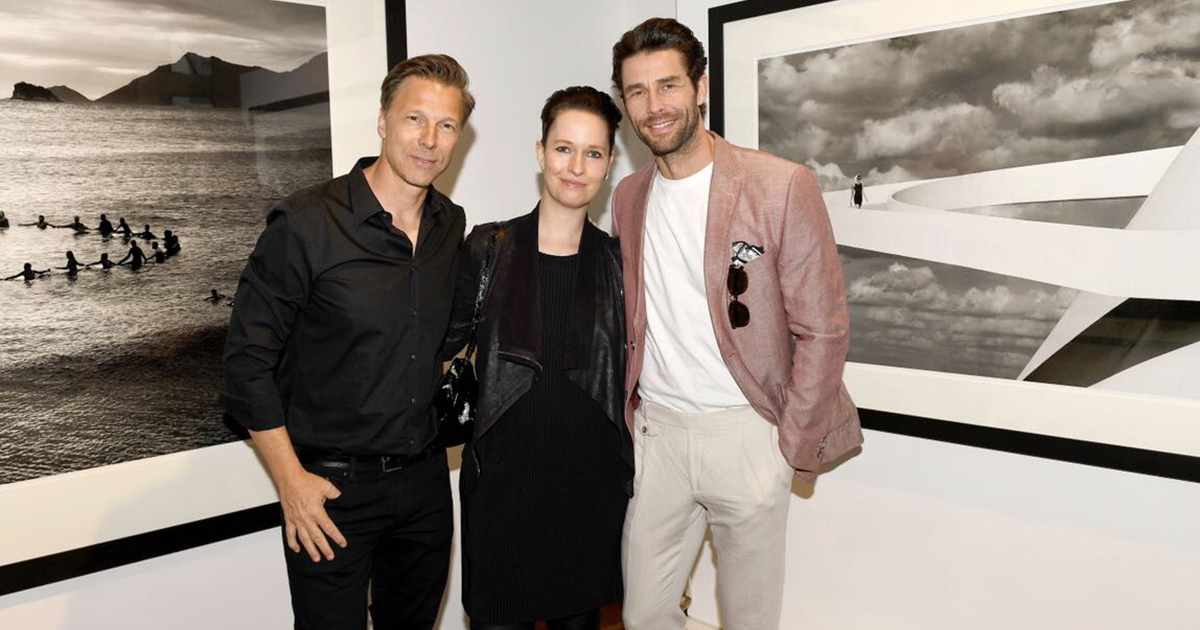
![]() Photographer Olaf Heine, Press Officer Nadine Dinter and model Maik Eichhorn, Galerie IMMAGIS, 2018, Photo: Michael Tinnefeld
Photographer Olaf Heine, Press Officer Nadine Dinter and model Maik Eichhorn, Galerie IMMAGIS, 2018, Photo: Michael Tinnefeld
What is your earliest memory of photography art, and what led you to start collecting it and promoting it?
Photography has always been a passion of mine. As a teen I started taking pictures using an old Praktica I inherited from my grandfather, and I loved visiting the few photography galleries that were around in the nineties in Berlin. Rare works at Kicken gallery in Berlin-Mitte, high-fashion photographs at CAMERA WORK in Charlottenburg, as well as the fantastic Helmut Newton retrospective in 2000 at Neue Nationalgalerie are three highly memorable shows from the early years.
The reason I started collecting and promoting art came from my strong desire – or even need – to have art in my private and professional life. And photography, with its exciting history, captivating works and protagonists, plus my own photographic work, seemed to be the perfect medium to build the rest of my life on. The rest is history…
How would you describe yourself as a photography PR specialist?
24/7, passionate, professional, open, ambitious, well-connected, a healthy mix of outgoing and discreet, eager to constantly learn about the classics while discovering the work of new photographers. My motto: Consult, communicate, connect.

![]() Together with the Hilton Brothers Paul Solberg (left) and Christopher Makos (right), Waldorf Astoria Hotel Berlin, 2016, Photo: Dietmar Bührer
Together with the Hilton Brothers Paul Solberg (left) and Christopher Makos (right), Waldorf Astoria Hotel Berlin, 2016, Photo: Dietmar Bührer
What is the main motivation behind your work?
The central aim of my work is to create maximum exposure and media attention for the projects I am promoting. This means international press articles, well-orchestrated press events and openings, and the many visitors activated to come and view the gallery exhibition, museum show, or festival. Personally, I love the feeling of being immersed in the art experience. It’s also immensely rewarding to be at an opening and to see the happy faces of the client, the artists, and the visitors.
What are the three main qualities an art consultant must have?
Willpower, patience, and connectivity.
What are some dos and don’ts artists should know when working with a consultant?
Dos: If you decide you want support, then be open, cooperative, and willing to accept advice you might not like at first.
Have a clear vision of what you want, or try to express the essence of your goals as clearly as possible, so that the consultant can pick up on it and build your personalized strategy.
Don’t: Don’t overestimate yourself but also don’t underestimate yourself. Be ready to let go of old habits and to let in fresh perspectives, new ideas, and unusual approaches.
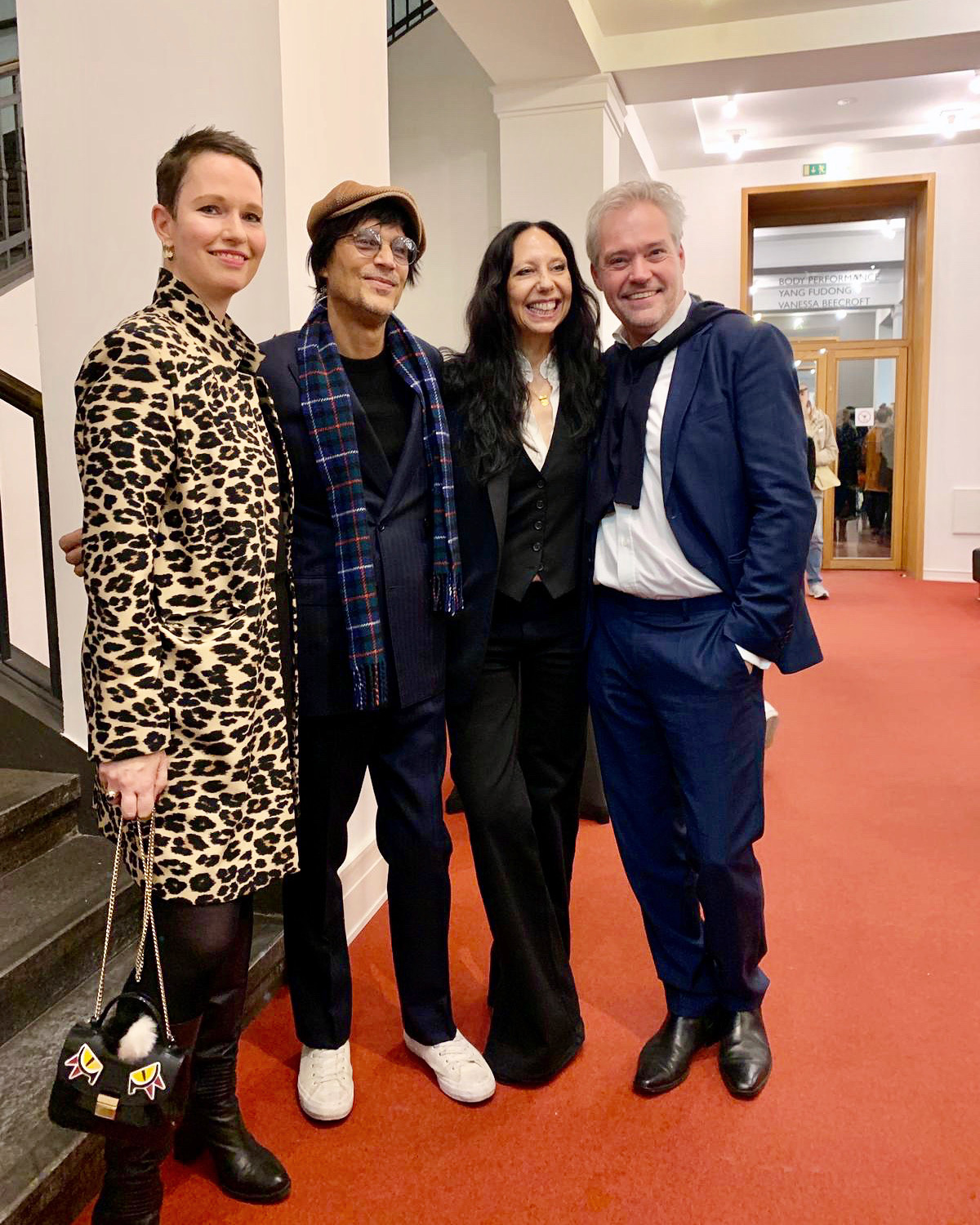
![]() With star photographers Inez & Vinoodh and curator + director of the Helmut Newton Foundation, Matthias Harder, HNF Berlin 2019
With star photographers Inez & Vinoodh and curator + director of the Helmut Newton Foundation, Matthias Harder, HNF Berlin 2019
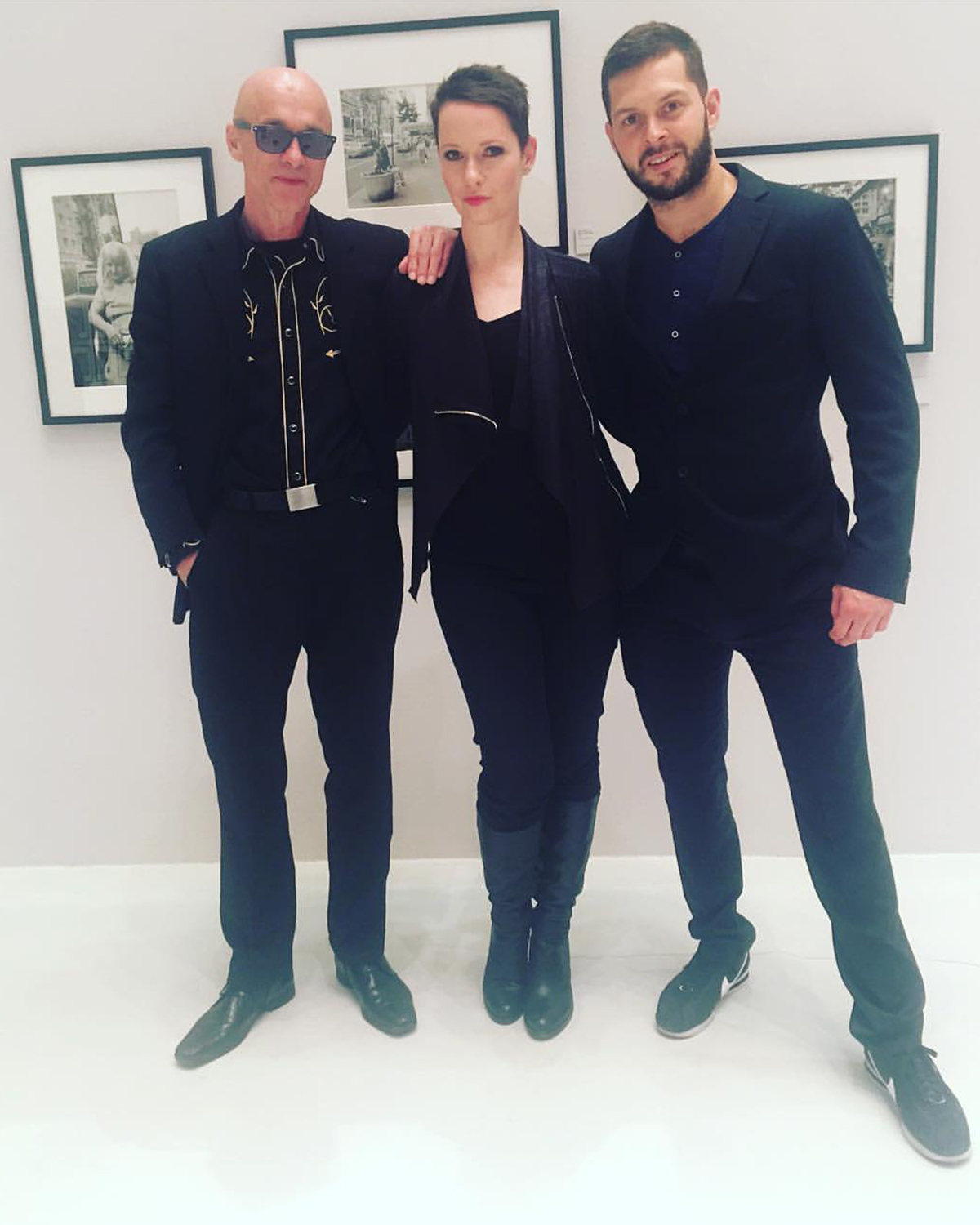
![]()
During the opening at the Deichtorhallen, with photographer Miron Zownir (left) and his gallerist Bene Taschen (right), Hamburg 2016
As a PR and art consultant, how have you built up your wide network of artists and clients? How has this changed since COVID-19?
Part of my work is visiting major photography events, such as les Rencontres d’Arles and Paris Photo, but above all, the photography-related events here in Berlin. This is where you see the artists, clients, and curators you already know but also where you get to know new people in the scene, by being introduced to them or by introducing yourself. Going to openings shows their respect, and signals that you, too, are an active part of the scene. Plus you can see the works in person: for me, a digital representation is no match for a live experience.
Since COVID-19, the scene, the personal encounters, and the whole feeling of togetherness have been hit incredibly hard. Otherwise simple acts of meeting in person to talk about art and life, all the little human interactions, not to mention travel – these have all been put on hold. On top of that are the financial woes that have come with the closing of the art spaces.
What is the most recent work of art you added to your personal collection and why?
A beautiful black and white portrait of Alfred Hitchcock, taken in 1970 by Greg Gorman. On the one hand, I adore b/w portraits, and on the other hand, I love Hitchcock’s movies. So two passions are combined in one photograph.

![]() With jazz musician + photographer Till Brönner and photographer Tom Lemke, Berlin 2016, Photo: Steven Kohlstock
With jazz musician + photographer Till Brönner and photographer Tom Lemke, Berlin 2016, Photo: Steven Kohlstock
Has digitalization changed the way you collect art?
Not really. Although I do read market reports, which inform on what is being auctioned or sold digitally, I am a classic collector who loves to stand in front of an artwork, to get a better sense of its materiality, feel its power; the live experience is what stirs my desire to buy the work.
Where is the future of the art market headed?
This year and last have proven that there are other effective means to show and promote art than “just” exhibitions and fairs. It’s great that novel ways of displaying and selling art are being developed and implemented. But at the same time, the art market seems to be shifting in favor of wealthy, blue chip galleries – at the expense of the diversity of the art scene, which consists of big AND small galleries, institutions and non-profits, temporary project spaces, artist initiatives, and so on. I sincerely hope that the art scene will start recovering soon, and that it will be able to regain its previous energy.
Top three art destinations
Helmut Newton Foundation, Berlin
Neue Nationalgalerie, Berlin
Camera Work, Berlin
Three inspiring artists to watch
Marie Tomanova
Armin Dietrich
Chloé Jafé
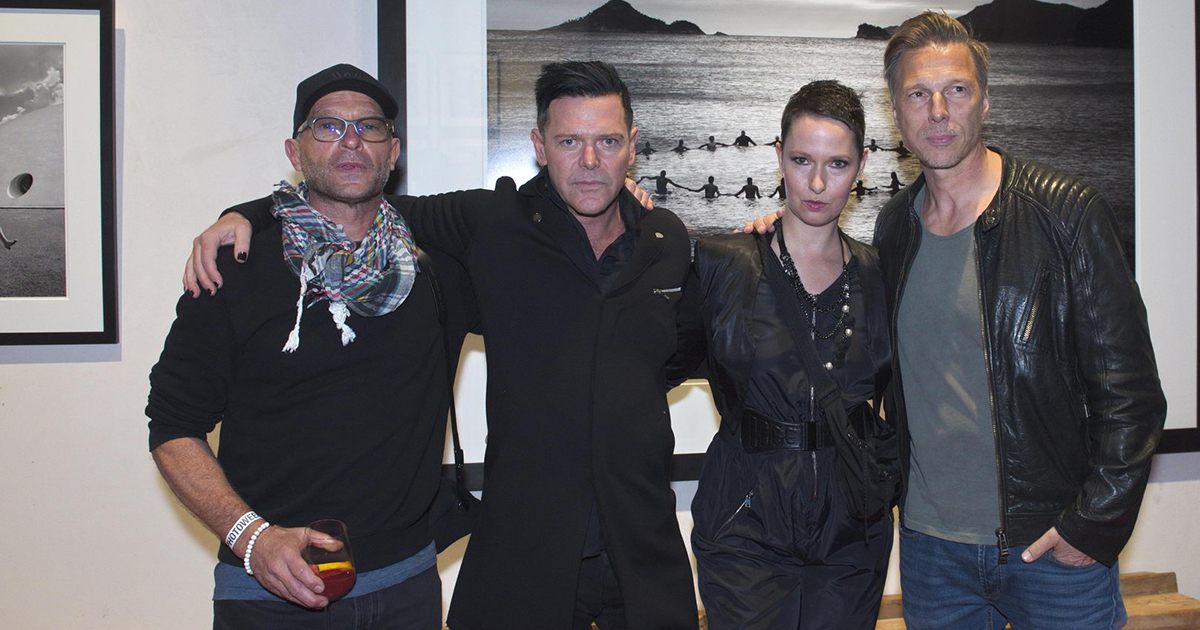
![]() Opening of Berlin Photo Week, with Thomas Kretschmann, Richard Kruspe and Olaf Heine, Chaussee 36, Berlin 2019, Photo: Christian Behring
Opening of Berlin Photo Week, with Thomas Kretschmann, Richard Kruspe and Olaf Heine, Chaussee 36, Berlin 2019, Photo: Christian Behring
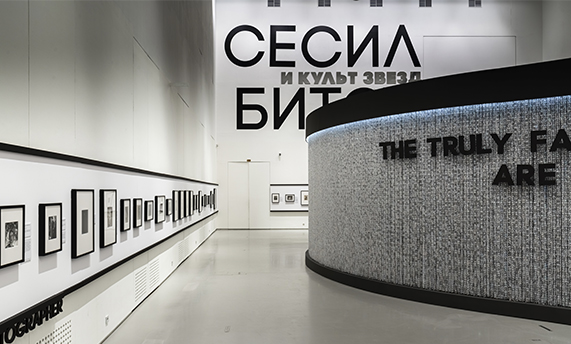
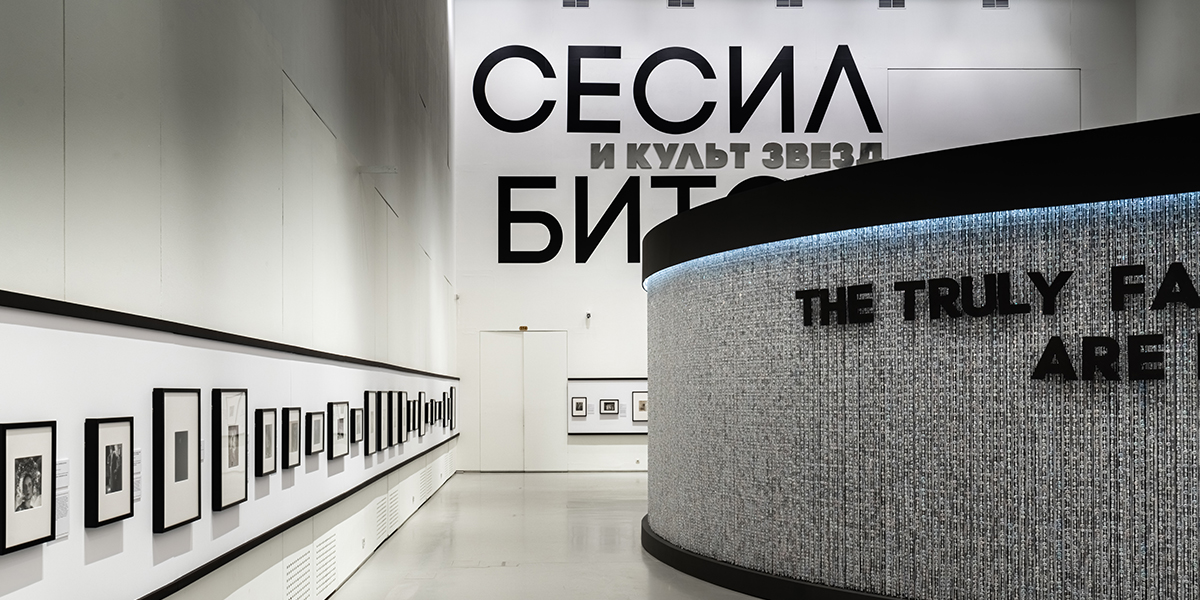
Text
L i s a L u k i a n o v a
An exhibition of works by British photographer Cecil Beaton will be held at the General Staff of the Hermitage from 9 December 2020 to 14 March 2021.
Cecil Beaton (1904-1980) is among the most celebrated photographers of the 20th century. After the Second World War he became the official photographer of the British Royal Court; in 1964 he was awarded an Academy Award for his work on the film My Fair Lady. In 1972 he was honored with the title of Sir. Over a career spanning more than fifty years, he has created a portrait gallery of great personalities, from Hollywood superstars to bohemian artists, from surrealist figures to a young Elizabeth II. Beaton described his main task in portraiture as staging an apotheosis – an arrangement of a spectacular appearance of a person in high society. The exhibition “Cecil Beaton. Celebrating Celebrity” presents over 100 portraits taken by Beaton over the years from the photographer’s studio, the V&A, Vogue magazine and Vanity Fair archives. The focus will be on Russian expatriates who have defined fashion culture and posed for Beaton’s portraits.
PurpleHaze team held a short interview with the creators of the exhibition. So, the questions are answered by Julia Napolova, architect and creator of the architectural bureau PSCulture, and the curator of the exhibition “Cecil Beaton. Celebrating Celebrity”, and researcher at the State Hermitage Museum Daria Panayotti.
Hello Julia and Daria, thank you for taking time for that interview. Let’s start with a first question.Please tell us about the PSCulture Bureau, the projects it is involved in and its creation?
Julia Napolova: PSCulture was founded in 2014. From the beginning, the objectives of the Bureau have been positioned in the field of culture, and since then, the company’s course has not changed. Despite its narrow specialisation, the projects are really diverse: concepts for new museums, design of temporary exhibitions, design of international exhibitions. Each new project gives us a new perspective on the multifaceted nature of the subject we deal with. Following a professional challenge, we have put together a team according to the same principle: everyone at PSCulture has their own unique experience and style. At the moment the bureau is working on projects such as the Regalia of the Moscow Kremlin, the Moscow Planetarium exhibition and the Polytechnic Museum. In 2020, in spite of the pandemic, we opened not only Cecil Beaton in the Hermitage, but also exhibitions about Alexander III in the State Historical Museum and Yesenin in the Literary Museum named after A. Dahl. Dal.
The exhibition “Cecil Beaton. Celebrating Celebrity” was launched at the State Hermitage Museum – a project dedicated to the absolutely legendary twentieth-century photographer. Please share what it was like to organise an international exhibition amidst the pandemic?
Daria Panaiotti: At various stages of the project, the participants were required to show very rare qualities that require great composure: a blind faith that the project will happen and a desperate will to keep working at the same level of mastery; optimism in the face of logistical and other difficulties that at first seem insurmountable; the ability to mobilise quickly and start working at maximum capacity when confirmation finally comes about deadlines and the completion of the various stages of the project.
What exactly fascinated you about Cecil Beaton’s work? And why has he become the central character of this new project? Could the theme of secular photography from the turn of the century be of interest to today’s viewers?
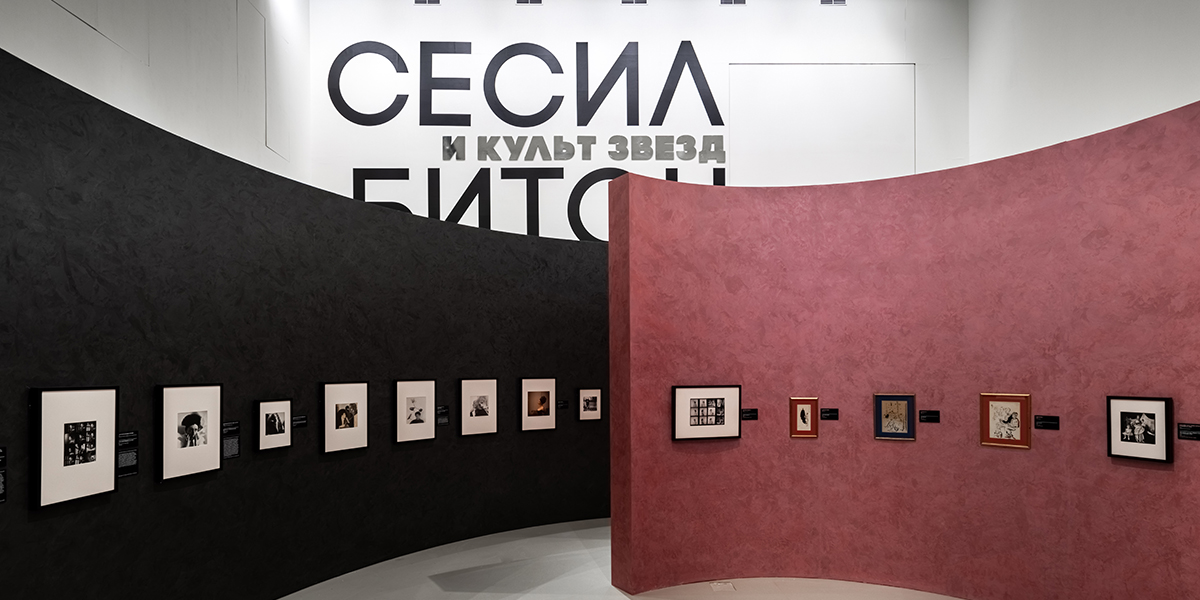
Daria Paniotti: Beaton can be called one of the creators of the culture in which we all live today: the culture of the celebrities, which is based on an avalanche economy of visual images. We all create our public image with selfies on social media today; Cecil Beaton formulated many rules that remain unalterable to this day.
At the same time, it is a special challenge for the curator. The terminology relating to fashion, secularism, and public culture is poorly developed in Russian. Beaton is part of the phenomenon of British culture, which is very difficult to explain and with which it is difficult to draw parallels in Russian culture. I found this task very challenging because it was a very interesting one.
What was your main source of inspiration in the visual design of the exhibition?
Julia Napolova: The main inspiration for us was Beaton himself, his personality and approach to his work. Cecil loved unconventional moves, provocation, irony – but his camera idolised its characters. We have tried to express this contradiction through the selection of materials. Lace, as the main leitmotif of the decoration, is meant to stun the viewer with its luxury and glitter, but these stars are just a background for the real, Hollywood stars hidden behind the shimmering curtain. The texture of the decorative plaster references the velvet of the Royal House, with which Cecil has worked for many years. The perimeter display is maintained in a more austere monochrome frame, emphasising the aesthetic of black and white photography.
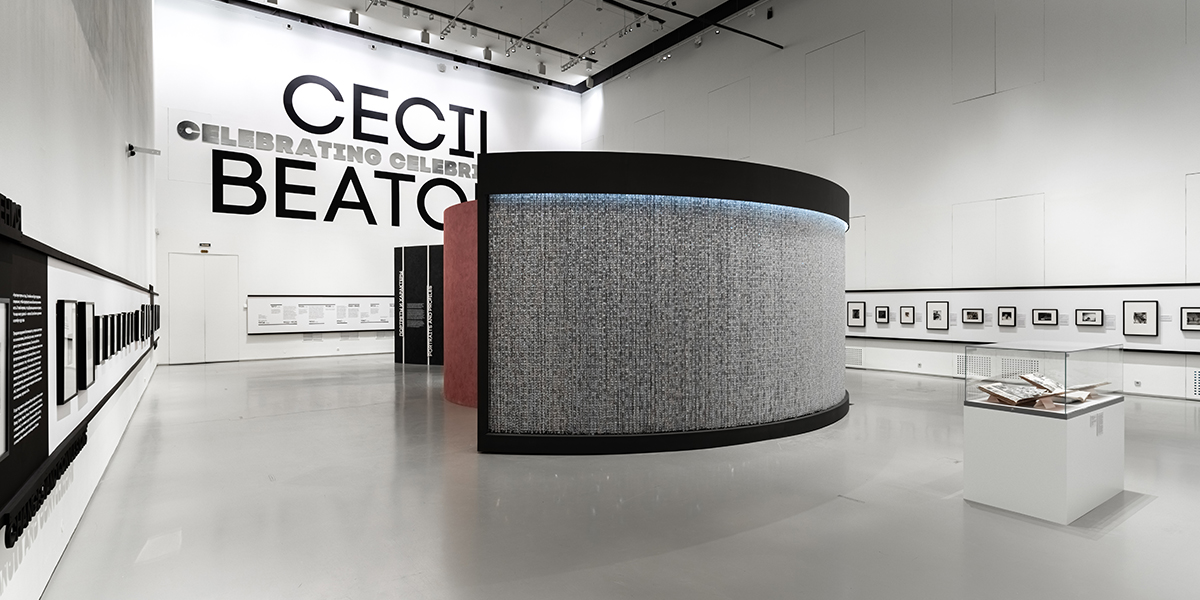
Tell us about the organisers of the exhibition and the team. How did it come together?
Daria Paniotti: The Contemporary Art Department team and the Hermitage team, which consists of many professionals in a variety of fields, had a lot of help from colleagues at the British Friends Foundation. I think they were also interested in bringing in such an important name, which for some reason has remained very little known to the Russian public.
Many people say that the Internet will soon replace exhibitions. Aren’t museum exhibitions a thing of the past?
Daria Paniotti: It was very important for us to bring exactly vintage prints to the exhibition; nothing can replace the materiality of an art object and a historical object. We’ll see what the long-term effects of the pandemonium will be. Before it, the example of Sweden’s Fotografiska, an ultra-popular museum that actually takes vivid photography from the pages of creative content aggregator sites into physical space, offering a cultural experience of encountering art, a kind of accessible form of high-end consumption, shows that museums cannot replace the Internet.
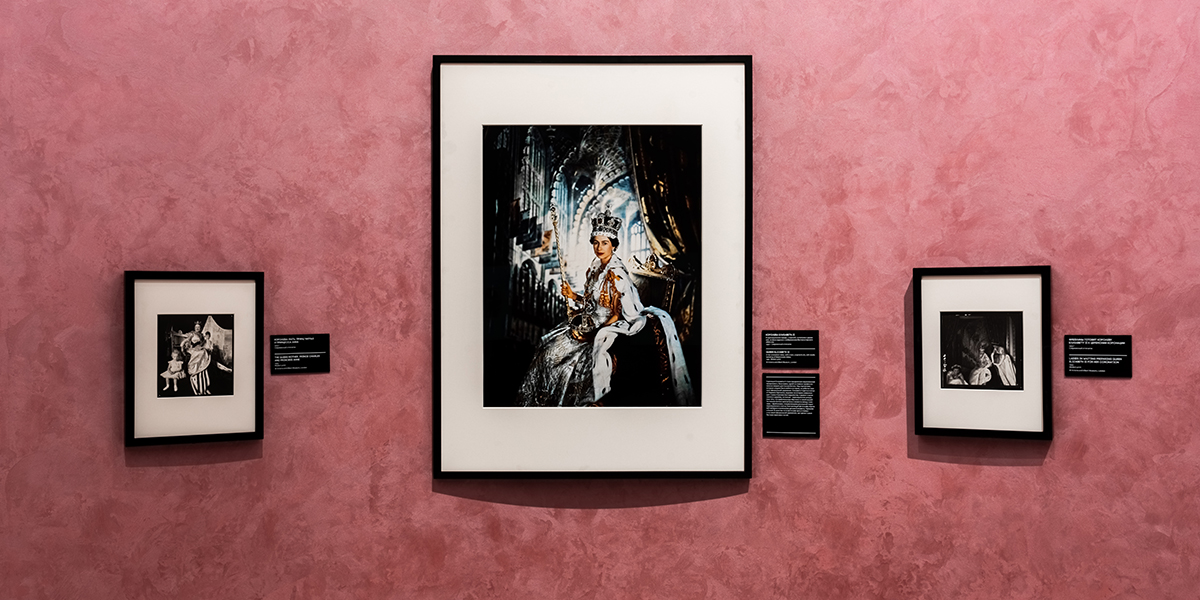
What is the portrait of your target audience? In your opinion, what and how can you draw the audience’s attention and interest these days?
Daria Panayotti: The Hermitage is one of the main museums in the country, so we always have a task to work with the widest audience. We have tried to select works and compose texts accompanying the exhibition in such a way that it should also attract people, who actually came to see their favourite impressionists and to look at their works.
How do you think the art world will be in 5-10 years?
Daria Paniotti: I think there will certainly be fewer blockbuster exhibitions, and museums will work more with their collections, discovering new things and rethinking old ones. This trend, even before the pandemic, began to be set when MoMA was reorganised. Museums, even the largest ones, will turn to local, urban audiences. Curators will have to look into the eyes of their audience and learn to apply the good old laws of rhetoric, whereas before it was accepted that the curator would create meanings in cooperation with art, while the spectator was often excluded from this dialogue. In Russia, this means that the language of art talk will change in a major way; it will become more transparent, more accessible, and in big cities, it will have to be done without simplifying the content. In my opinion, a very noble task!
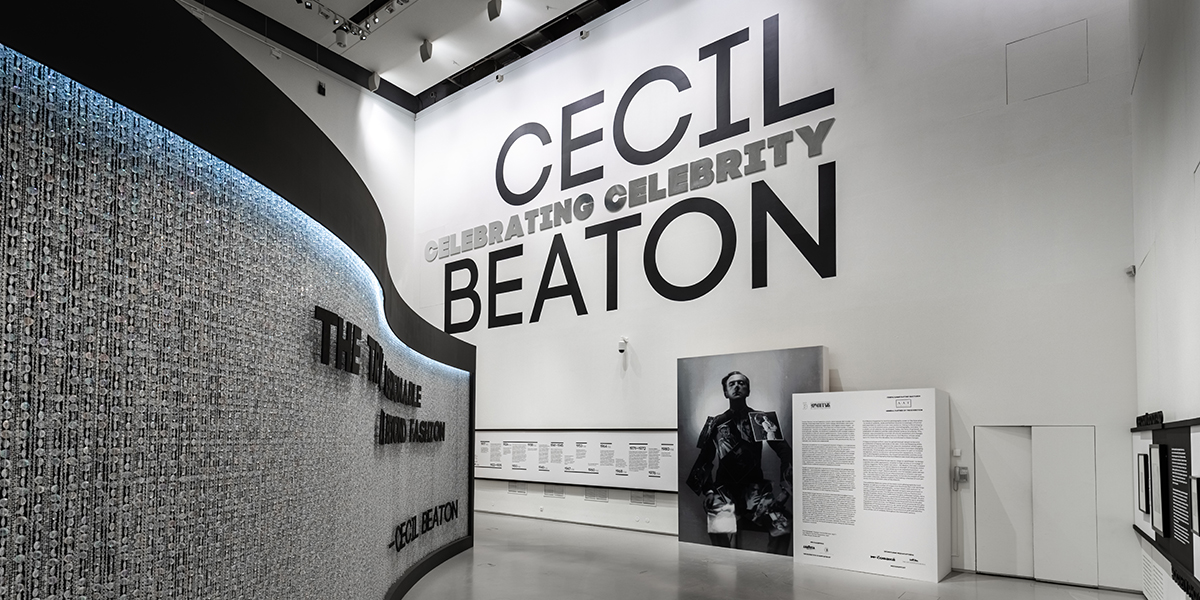
What are the three components of a successful exhibition? What is the best way to attract the attention of a person interested in art nowadays?
Daria Paniotti: I think this will vary greatly from country to country. The content of the exhibition needs to resonate with certain social attitudes (strangely, one of the most popular pieces in Cecil Beaton’s exhibition was a portrait of Aldous Huxley; it is a rich source of thoughts! For the Russian viewer, an introductory text which sets the modus vivendi of the art perception is very important (even if it has to be intuitive, rather than intellectual – it had better be spelled out). And, of course, the very organisation of the exhibition must „draw“ you in; it is clear that just displaying the objects in the showcases is not enough; you have to create an environment that will entice the visitor to stay longer, to extend the physical and social experience of going to a museum.
Instagram PSCulture studio @psculture_studio
Facebook PSCulture studio PSCulture.studio
Facebook Dasha Panayotti dasha.panayotti
Instagram Hermitage Museum @hermitage_museum
Instagram Hermitage 20/21 @hermitage20_21
Text
I r e n R u s s o
Dear Andrea, thank you for taking time for an interview with us!
Your work is very diverse, expressing itself through the use of various media. Tell us about the creative process behind it.
It’s true, it is really diverse, it combines a lot of practices in one single person. For Tribute to the Noise, the latest series I am developing since two years and a half, I focused on representing the randomity of the behaviour and the constant that in a lot of studies is described as “random variable”: something that you must calculate in all scientific studies, and the one that if you wish to avoid, it will always be there.
In my work, I am translating this random variable into a video with the use of the noise, the video noise. Each video relies on its own rules but, from the audience point of view, it can be perceived differently: you can feel it, understanding its substance immediately. The results can be described as “chaotic”. As an outcome of these explorations, I have developed an original code in GLSL that uses a random value generating the noise itself.
With this process in mind, applied to my personal aesthetic and colours research, I wanted to push my practice forward and use this palette in the most various way possible, therefore experimenting with lots of different media. I wanted to constantly practice by generating and developing different artworks with the same “random” variable, permeated by the same aesthetic: from a big LED wall to a more conventional FULL-HD screening, from different dimensions and aspect ratio of screens to a LED Fan Display, from Prints to 3D Sculptures.
My palette of colours and video movements is definitely evolving with time, but the core remains the same and it is applied in everything that can be produced in the arts – following the daily growth of possibilities found in old, new and future media.
I am very critical towards the rush to the new technologies, the risk to create the first installation that comes to mind, or use them in a simple way without questioning them enough, using them only for the reason of their novelty. To me, time is of vital essence to allow new technologies to sediment and find a truthful, artistic meaning, not only using them for the pure rush of being the “first”.
Right now I’m focused on developing a VR installation and continuing my research on printing techniques, testing different papers, aluminum and 3D sculptures.
At the same time, I’m producing a new show with Fronte Vacuo (frontevacuo.com): an artists group which I co-founded with Marco Donnarumma (marcodonnarumma.com) and Margherita Pevere (www.margheritapevere.com).
The group was born with the aim to address the current convergence of ecological disruption, socio-political polarization and technological advance. We are working really closely in order to achieve a shared, collective critical thinking flux, each of us with their own expertise but in a continuous exchange of ideas. I’m really glad and proud to have found this sinergy.
What is the main idea you want your audience to take with them?
It’s not really an idea, but feelings. I’ve always appreciated standing in front of an artwork and understanding my own version of it without even reading the description, sometimes not even the title. And I have always remembered the feelings that I had, stronger than the idea that the artist wanted to share. Sometimes these two might overlap, but not always.
When you find yourself in front of an artwork with no coordinates to follow or over explanatory labels, you will try to reflect on something starting from it, and that will probably carry your mind somewhere else. That’s the journey I am interested in. By allowing yourself into my artworks, I am sure half of the meaning resides already there in yourself: then a part of the audience will maybe reach my idea, or not. And it doesn’t really matter in the end.
How would you define your personal aesthetics?
In a few words I would say a raw, hardcore grudge.
Naturally it’s not just that, but I would love this to be the only and final definition. I am focused on the grotesque that you can extrapolate from the use of the colors and shapes.
Tell us about the spaces within which you work.
It’s been two years since I started working in my current studio in Mitte. It’s a shared space with four artists – visual artists, sound artists and film directors. It’s basically divided into two different spaces: one which is more like an office with desks, computers, electronics and so on, and then a basement/atelier/tryouts space. Usually, most of the time, the only thing I need is my computer. But it is not the typical space where everyone has their own desk and we are by ourselves. We all have a good alliance and are really close, we are friends. We are trying to maintain an environment where mutual help and exchange are fundamental values at the core of our shared practice and space.
Have you ever had a moment when you questioned your career entirely?
Yes of course, during the last nine years it happened more than once. I guess every artist, every year, questions themselves.There is a moment, when you perceive the shadow of futility, looking at years and years of practice and feeling completely out of time or without a clear message for your audience…
From my perspective, it comes down to the fact that, in the end, we are human beings. With all the feelings and implications that derive from it. The most important part, though, is to get through these bad times. No matter what or how. I am usually getting over these moments by working harder.
Do you find that Berlin’s art scene inspires or influences your art?
Definitely. At least, when I moved here for sure. I moved to Berlin because of the incredibly nuanced and growing media art scene. A lot of artists from the past that inspired me were living here or their works were “born” and exhibited here. I wanted to see them live and not just on the web. After seven years of research and investigations, I found my own aesthetic and the aim in my work; what defines my “brush”. Even today, Berlin is still a place where I am intrigued by the art that is constantly in the making and the community surrounding this production. There is still a good exchange and knowledge sharing in the artistic community. It’s something that I have and I will always appreciate.
What advice would you give to a young artist following your steps?
The best advice that I continue to believe in and follow everyday is to “never give up” and “work everyday”. It sounds obvious and cheesy, but it is the fundamental part of every practice. As I said before, there will be dark times where you will question your entire career, but staying focused and continuing to believe in it, after years of trying and changing, and changing again, you will achieve what you have in mind. From my experience and encounters of my career, I didn’t find only one path to follow, no one can direct you where to go.
A good piece of art or, actually, any kind of job requires hard work before achieving the ideal results. It’s not something that appears overnight, but after years, and it may never do. And we need to keep on creating, being at peace with it. Everything needs time, and everyone has their own times.
Instagram Andrea Familari: @famifax
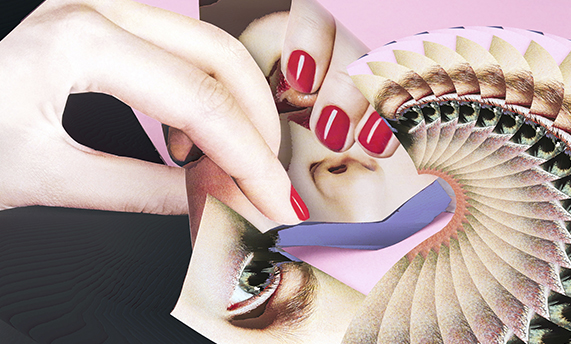
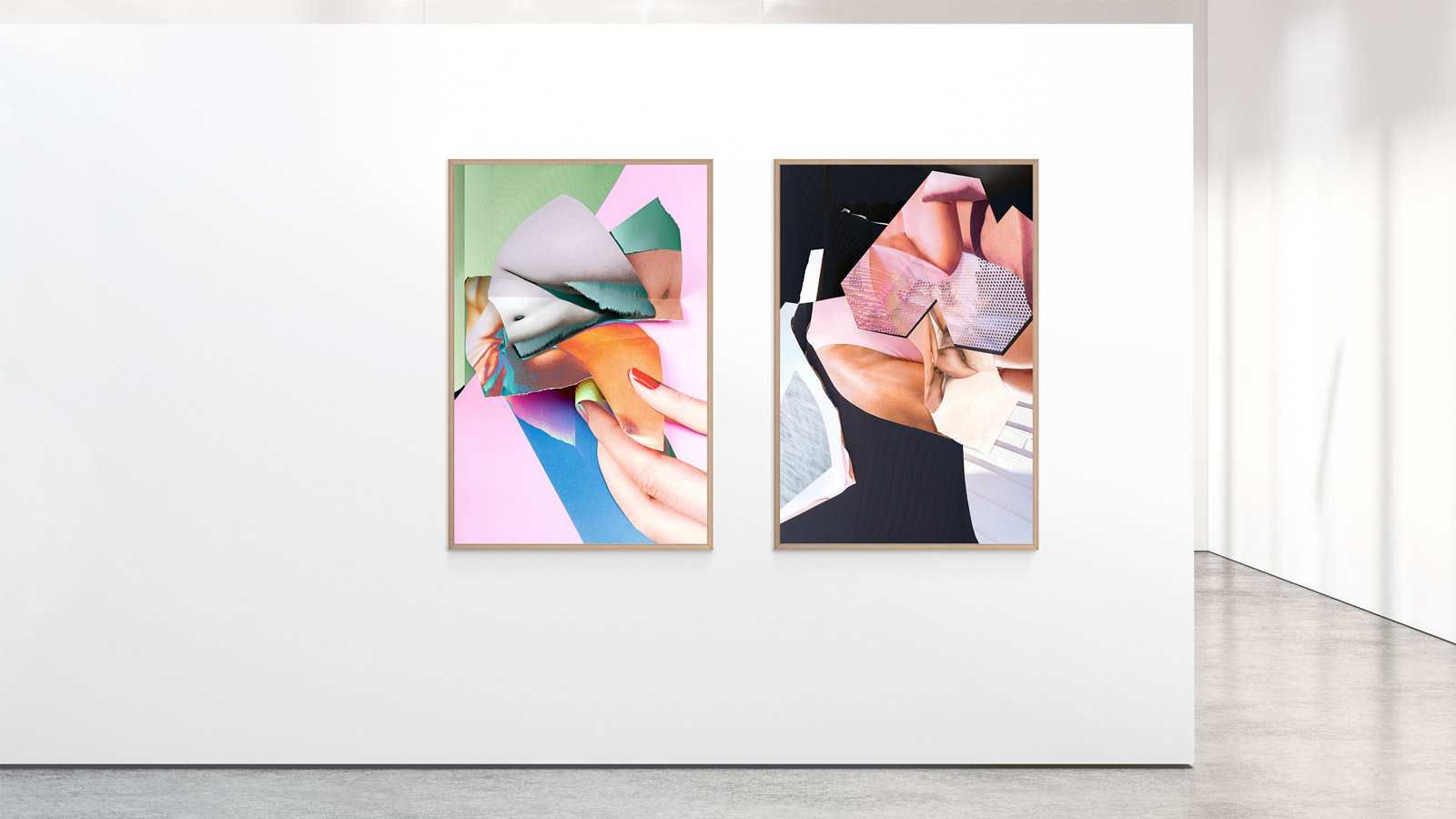
Text
I r e n R u s s o
Description of the project
Body Editor
photographic project (a series of photographic prints and GIF files)
Link to the full project: ewa-doroszenko.com/bodyeditor
The project was inspired by the failures and bugs in the popular beauty apps, where unnatural bodies get distorted. While the Internet can seem like a place disconnected from the physical world, much of the activity that occurs there deeply affects how we feel outside of it. In the age of social media, technology provides women with tools that allow them to quickly create dream digital images of themselves. Using various beauty applications, they can smooth, contour their faces, whiten their teeth, add a few centimeters of height, enlarge their eyes, choose different mouths, and use many other options. Digitally edited images can serve as aspirational fantasies and occasionally they even can have a positive impact – when they are just effects of joyful entertainment. But can the game in which your body is a battleground be truly enjoyable? The phrase from Barbara Kruger’s iconic work has just as much resonance today as it did more than a quarter of a century ago.
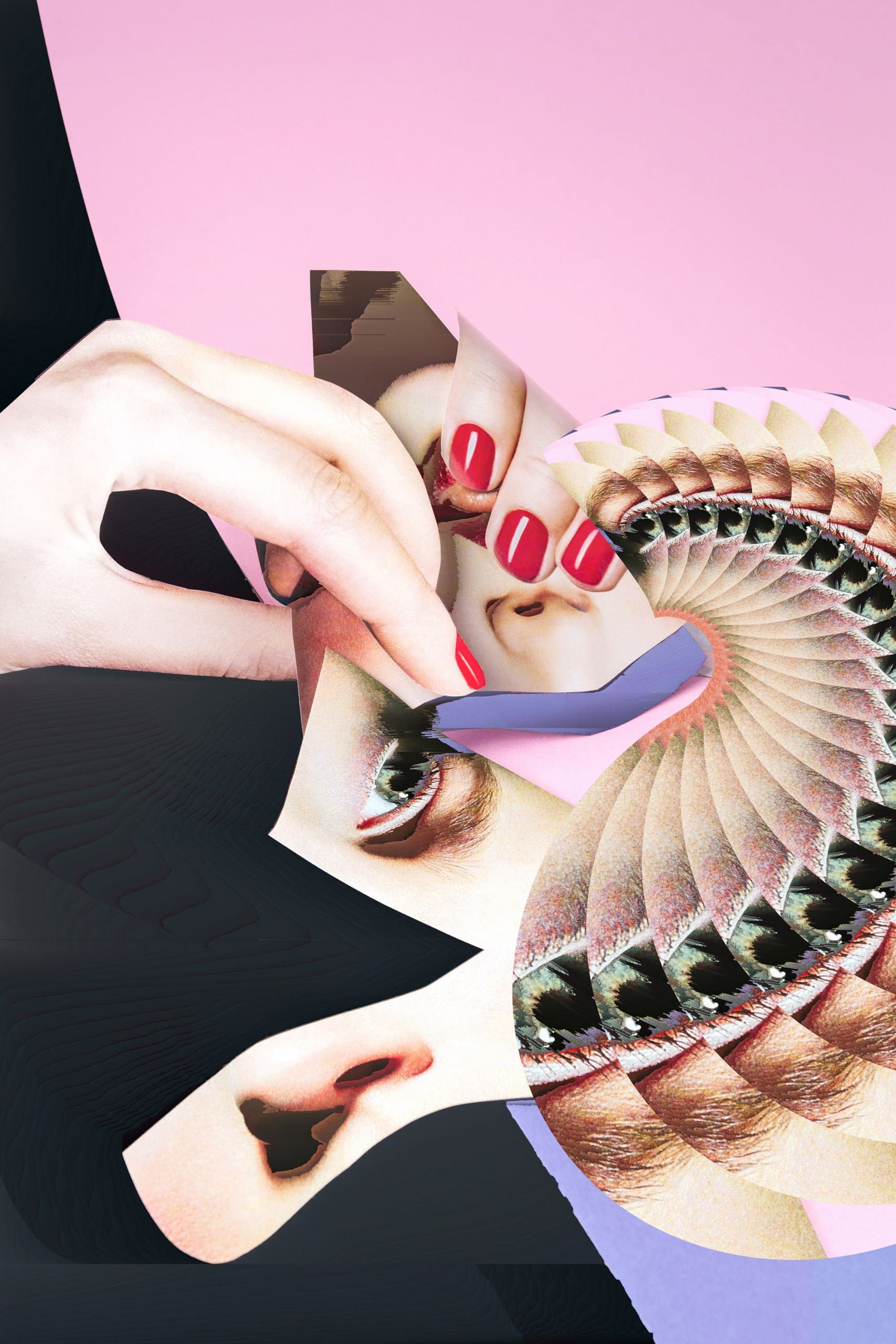
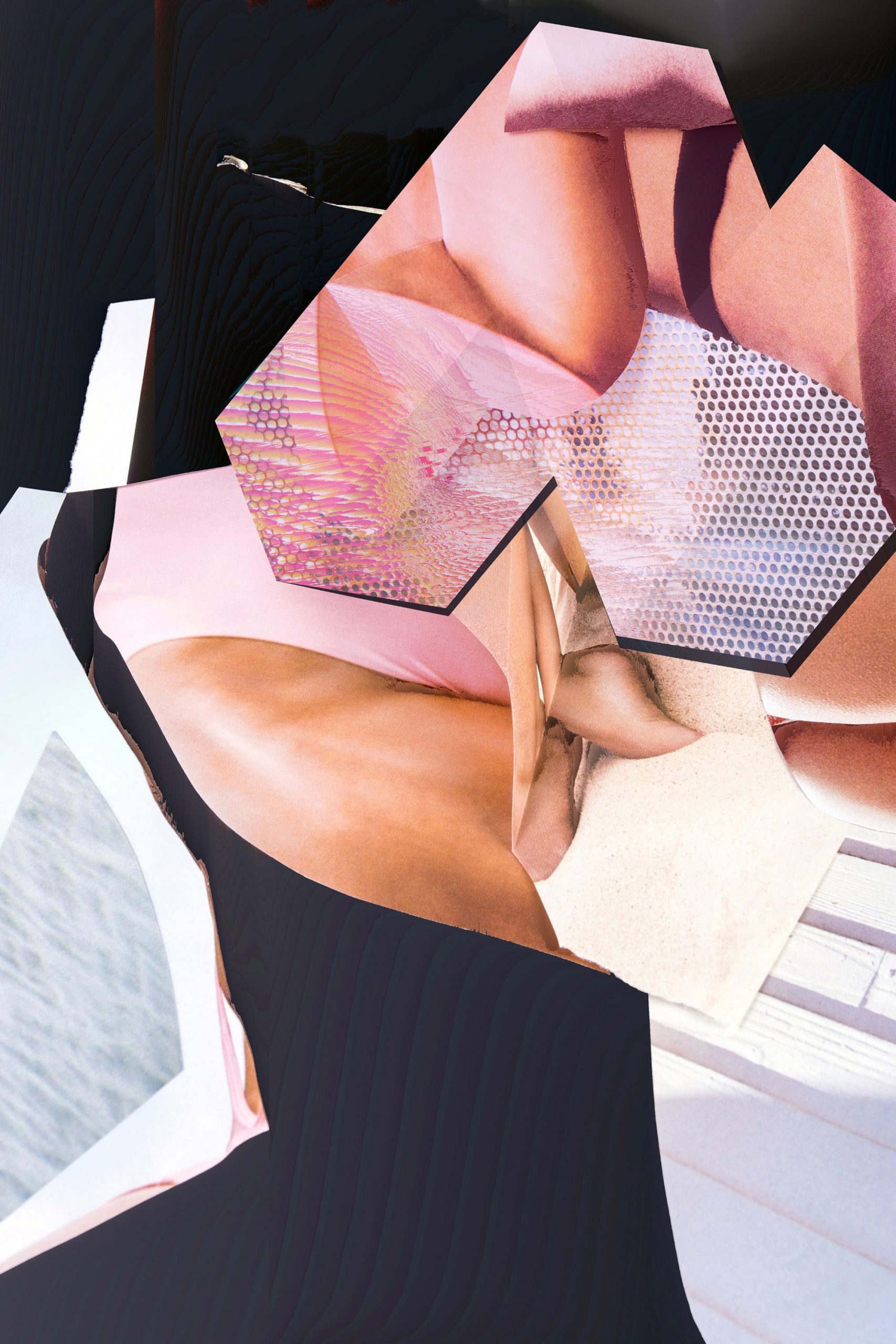
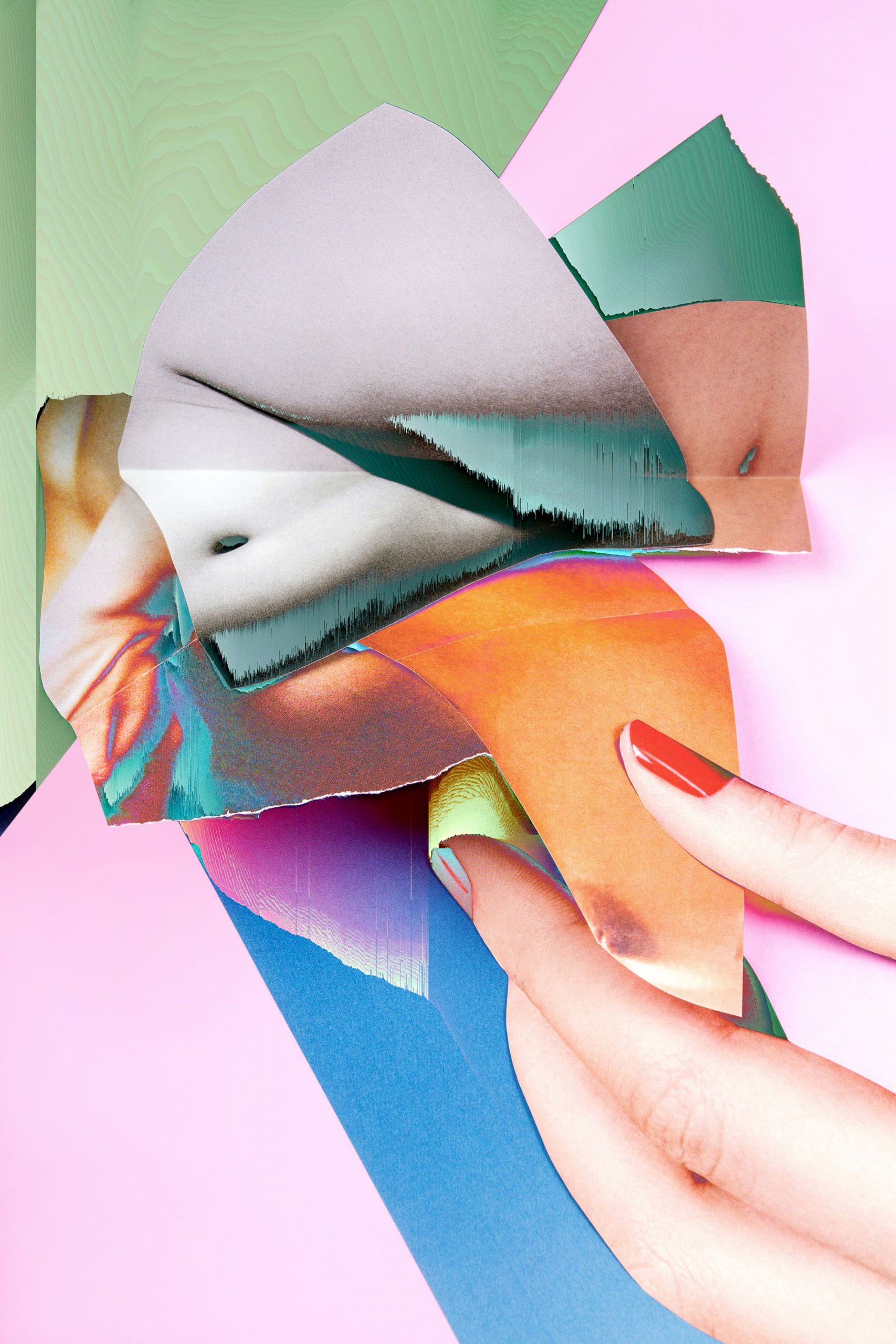
While preparing the project I used photography as a starting point, alongside digital tools to create an expressive project that is both a critique and a celebration of the ongoing progress in contemporary technology and culture. I employed many methods of creating images: preparing three-dimensional collages constructed from free stock images and my portraits, photographing the scenes, printing in large sizes, physically manipulating prints, and digitally editing selected photos. In the final work, I tried to leave visible traces of digital processing, partly revealing my working methods to provoke discussion about contemporary photography.
How did you get into art?
I never doubted that I wanted to be an artist. Even as a child, I heard very often that I am very talented in drawing. Although my interests were quite broad and I liked science very much, the desire to create my own reality through art eventually won. I studied painting, which quickly became a basic medium in my projects, and finally, I got my doctoral degree in fine arts at the Nicolaus Copernicus University in Torun. During my studies, I also began to experiment with a conceptual approach to photography. I started to understand photography not as a single act of liberating the shutter, but as a sequence of resulting actions, which extends from aesthetic choices, the staging of scenes, physical and digital manipulation of images to the final arrangement of the exhibition. Currently, in my work, I use the consonance of many media – from photography to sound. I am constantly fascinated by art and its use as a kind of language.
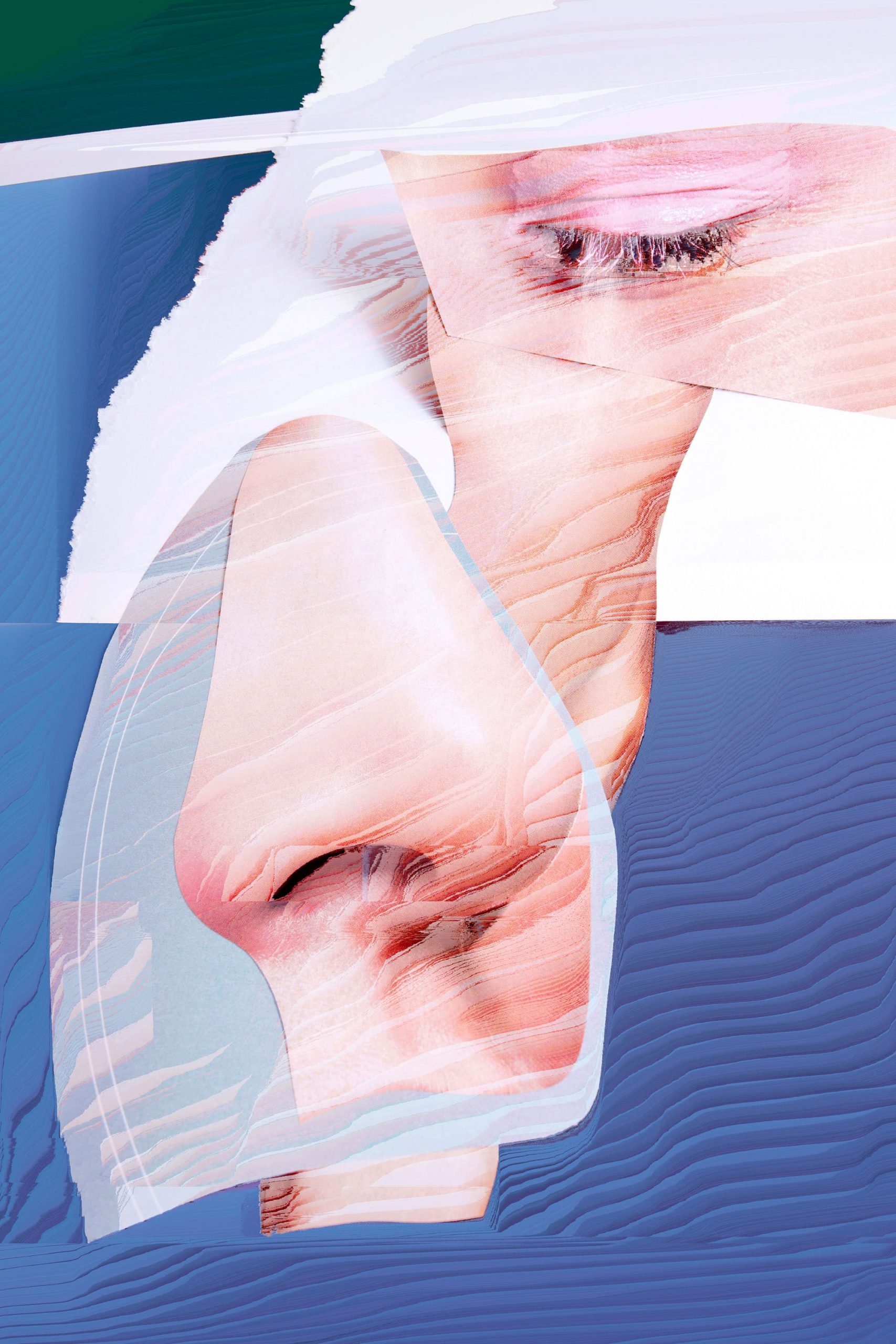
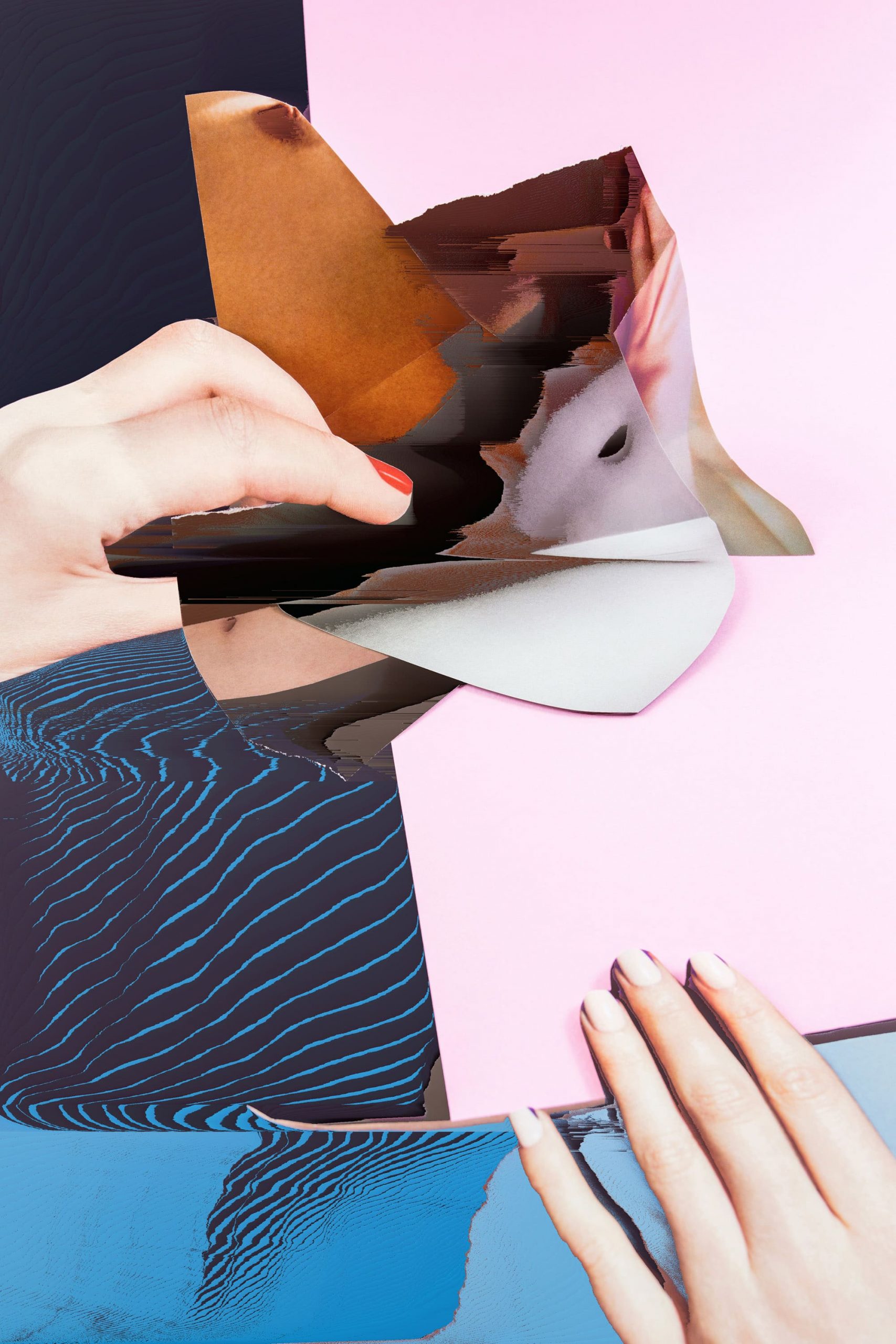
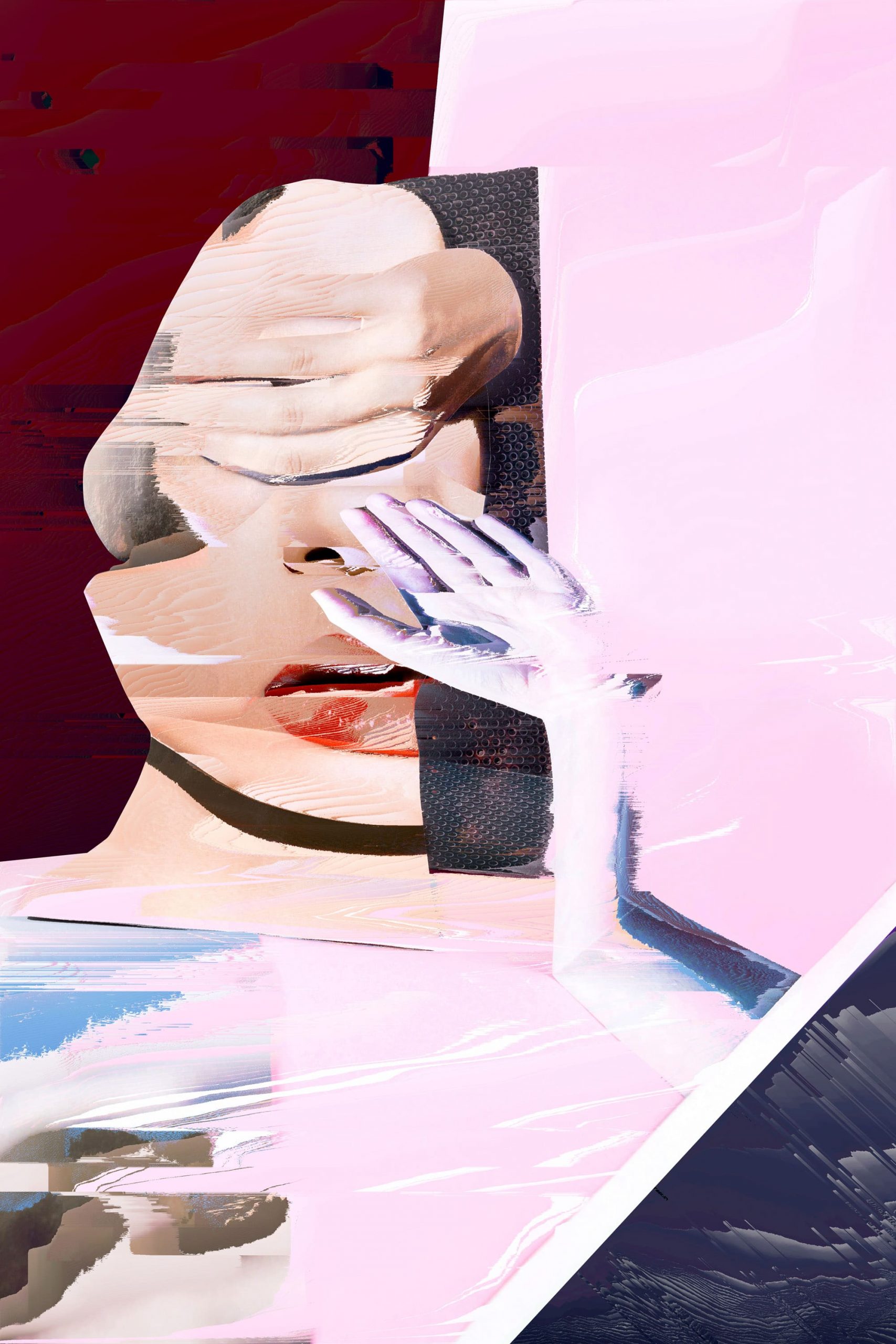
What does art mean to you personally?
First of all, I try to use art to create new worlds, a reality different from that which surrounds me. Art is also my primary tool for researching and describing the issues of contemporaneity. I am primarily interested in the meaning of the image in technological reality and the fluidity of beauty standards. My artistic explorations are not limited by any medium, either traditional or digital. Trying to express my thoughts, I experiment with various methods and technologies. Whenever I think about creating new works, I try to create structures with multiple layers of meaning. The material choices are calculated and meant to bring on the idea.
Is there a goal you’re trying to accomplish?
Sure, I usually try to have clearly defined goals. Of course, as I grow and respond to a changing situation, I modify my goals. This makes it much easier for me to make decisions. On the other hand, there is a lot of room for experimentation in my artistic activity, so I often don’t know where the whole creative process will lead me. That is why I try to maintain a balance between planning activities and responding flexibly to the situation.
At the moment, together with my husband Jacek Doroszenko, we are working on a new project entitled „Bodyfulness“, which, like our previous activities, is a creative experiment combining sound and visual art. My goal is to release the project this year in a form of the unique music album and present an exhibition which is an audiovisual study of how modern technology and culture change our intimate relationships.

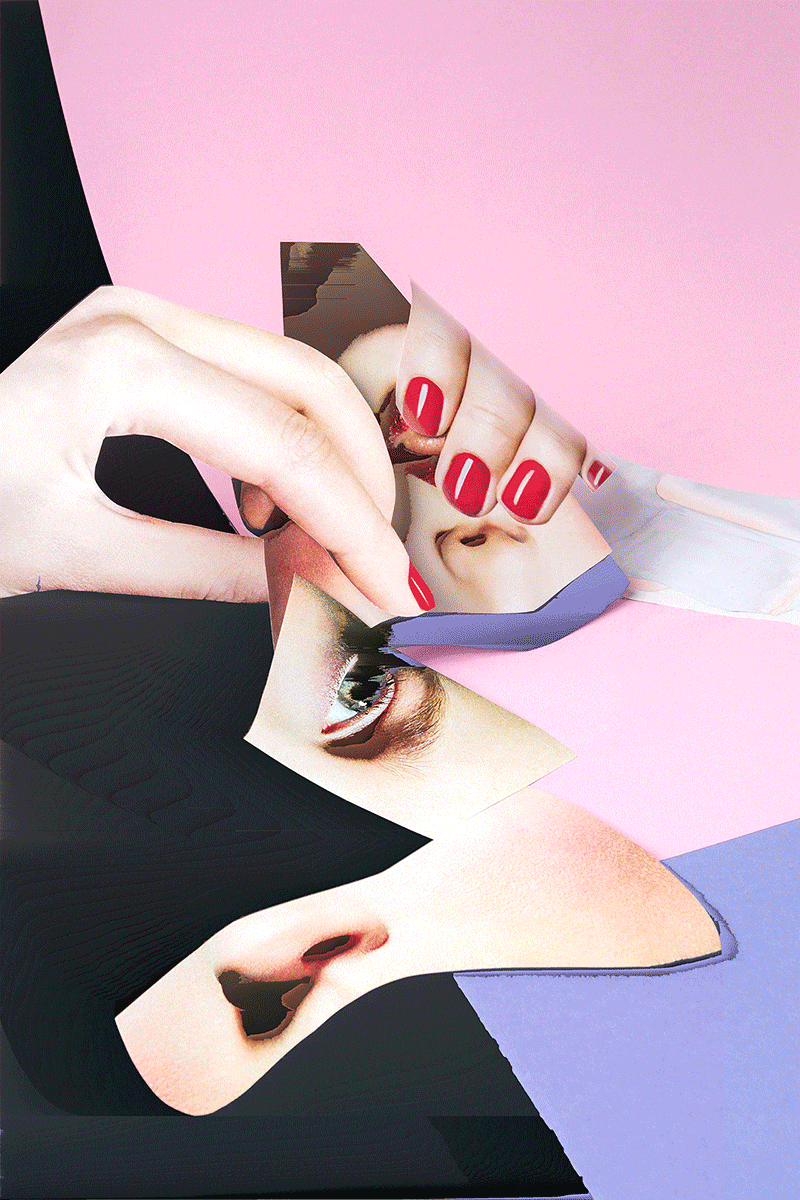
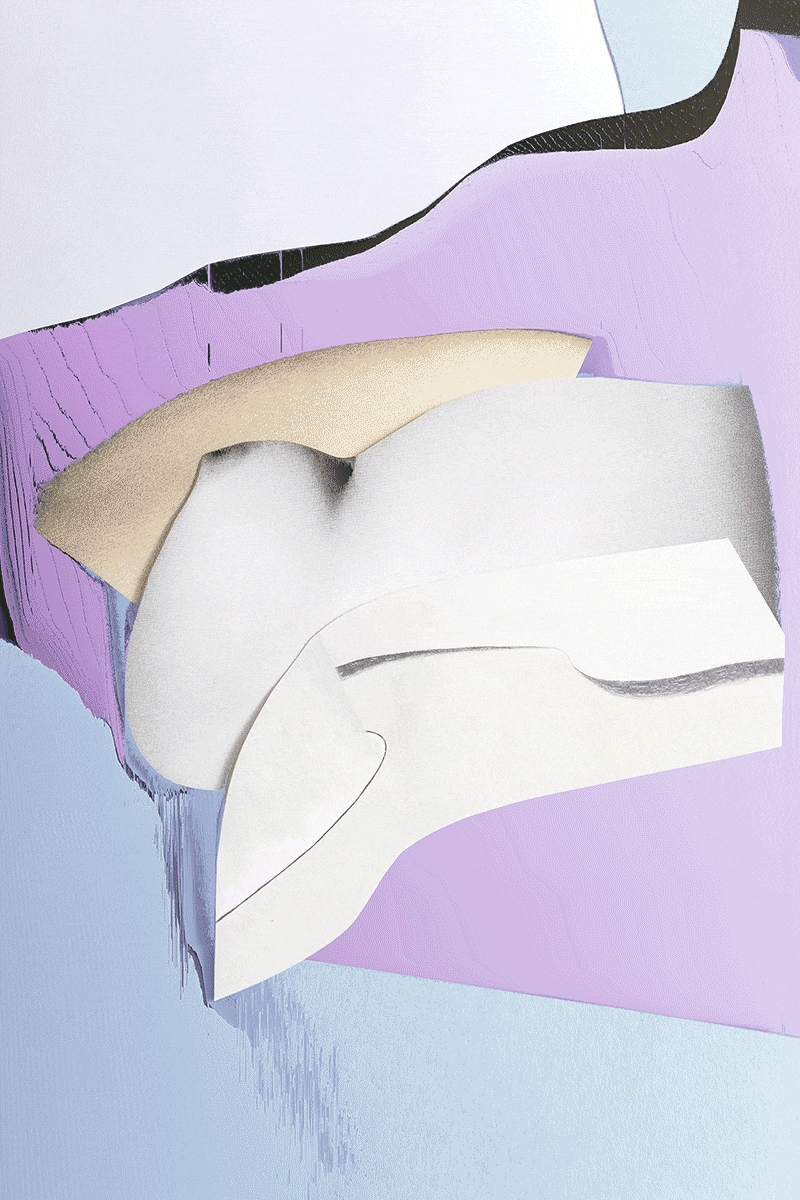
Do you have a life philosophy?
Yes, I have a certain philosophy of life. In a nutshell, it can be described as follows: I try to concentrate my energy on the things that depend on me. If I do something, I want to do it in the best and most professional way possible, regardless of whether my action is appreciated or not.
How do you think the art world will shape in the future?
The ongoing pandemic and simultaneous digital transformation have a huge impact on economic and social development. There are also great changes in the field of culture and art. As reality is increasingly being challenged by the virtual world and technologies are developing so rapidly, I think that in the future artistic productions will become more engaging and interactive. These new approaches and tools will perhaps allow even more artistic freedom, offering completely new creative opportunities, including the possibility of mixing elements that were probably impossible to combine before. I think that in the future, the physical experience of the exhibition will continue to be strong. But galleries will expand significantly in ways that are not just physical, but also digital.
Ewa Doroszenko Instagram: @ewadoroszenko
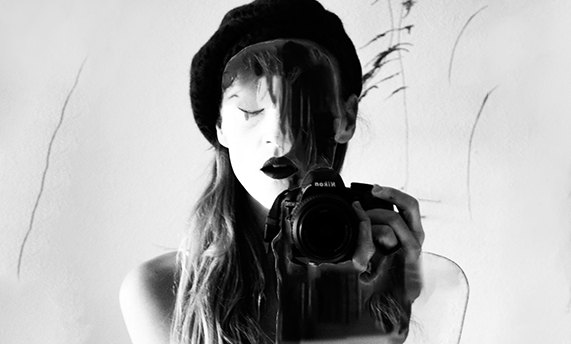
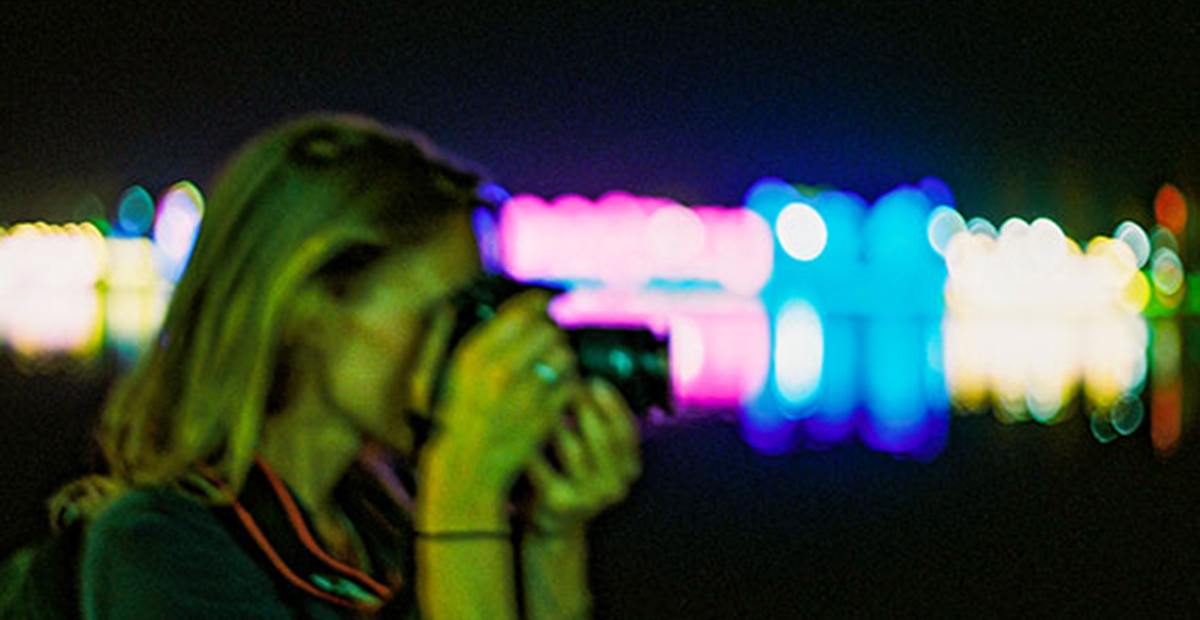
Text
I r e n R u s s o
Can you tell us about the process of making your work?
Every time the process is a little different. Ideas are everywhere and when one sticks I have to get it out of my head. Sometimes I will set up a photoshoot with a specific idea in mind and other times the structures of an image will lead me completely. Photography is almost always the basis of my work but I still think sculpturally; copying, pasting, layering, and transforming imagery into a new reality.
Sometimes it feels like I work in reverse. Only at the end of the making process when I feel the work is finished I can clearly see the meaning in what I was trying to achieve.
What is your daily routine when working?
I don’t have a set daily routine when working and that is something that I like. Each phase of my art practice has its own routine characteristics, however, in all of my practice the studio must be tidy and clean. This keeps my head empty enough to focus on the art.
Meditation helps me to listen to what is really important, and coffee helps me buzz with ideas whilst listening to the Coffee Jazz playlist…
What was the key influence that led to the development of your process and style?
During a study of advertising, communication and design I realised I was drawn towards the photographic elements of the process. This led me down a different path into the fine art world where I eventually graduated as a sculptor from the art academy.
The choice to switch from the foundation year “Lifestyle & Design” to Fine Art and graduating as a sculptor has been of great value not only for the process but also my style.
What does art mean to you personally? Is there a goal you’re trying to accomplish?
Art is my diary. It is an escape and a release. It is a filter to see the world through. I try to understand myself and the world through art.

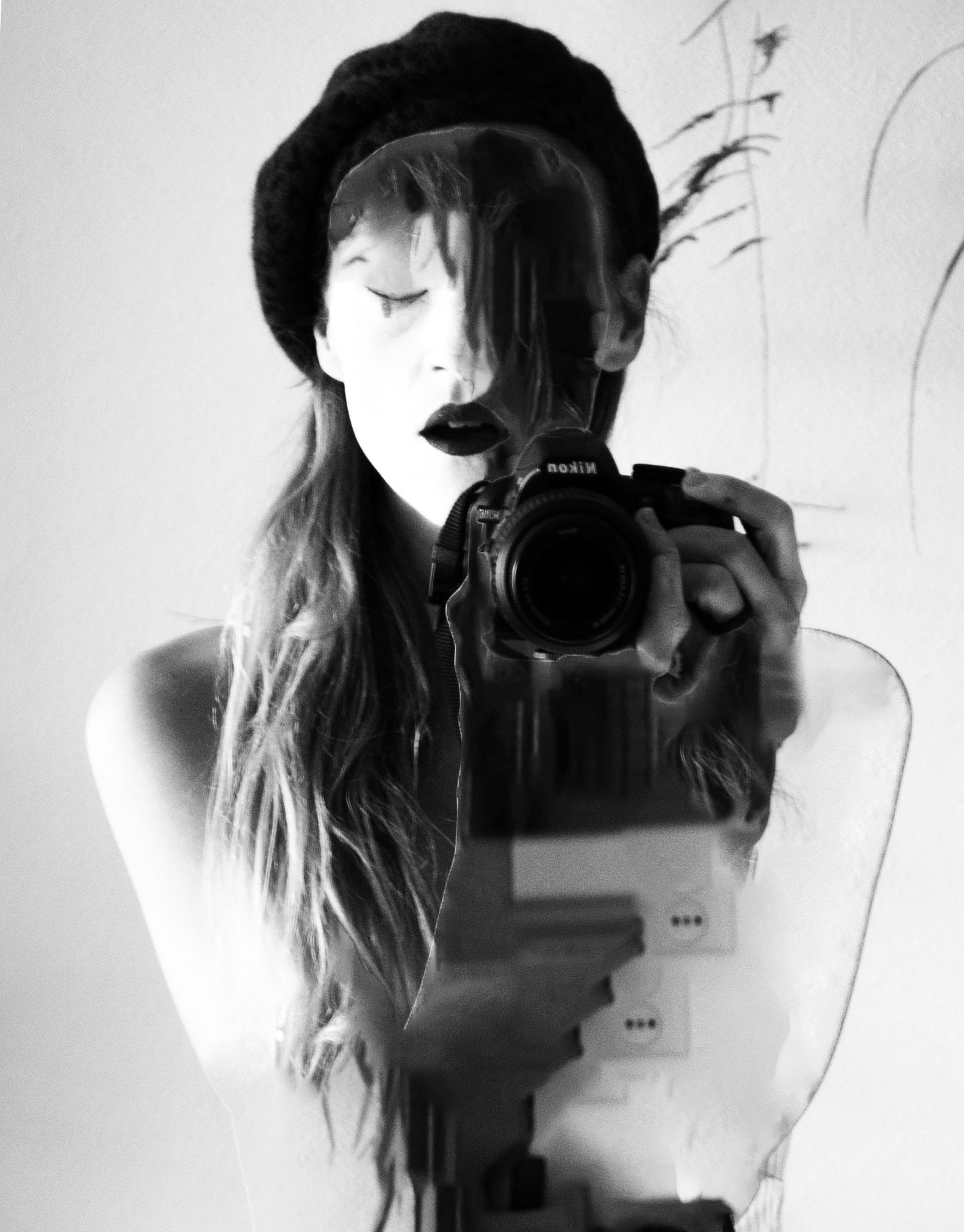
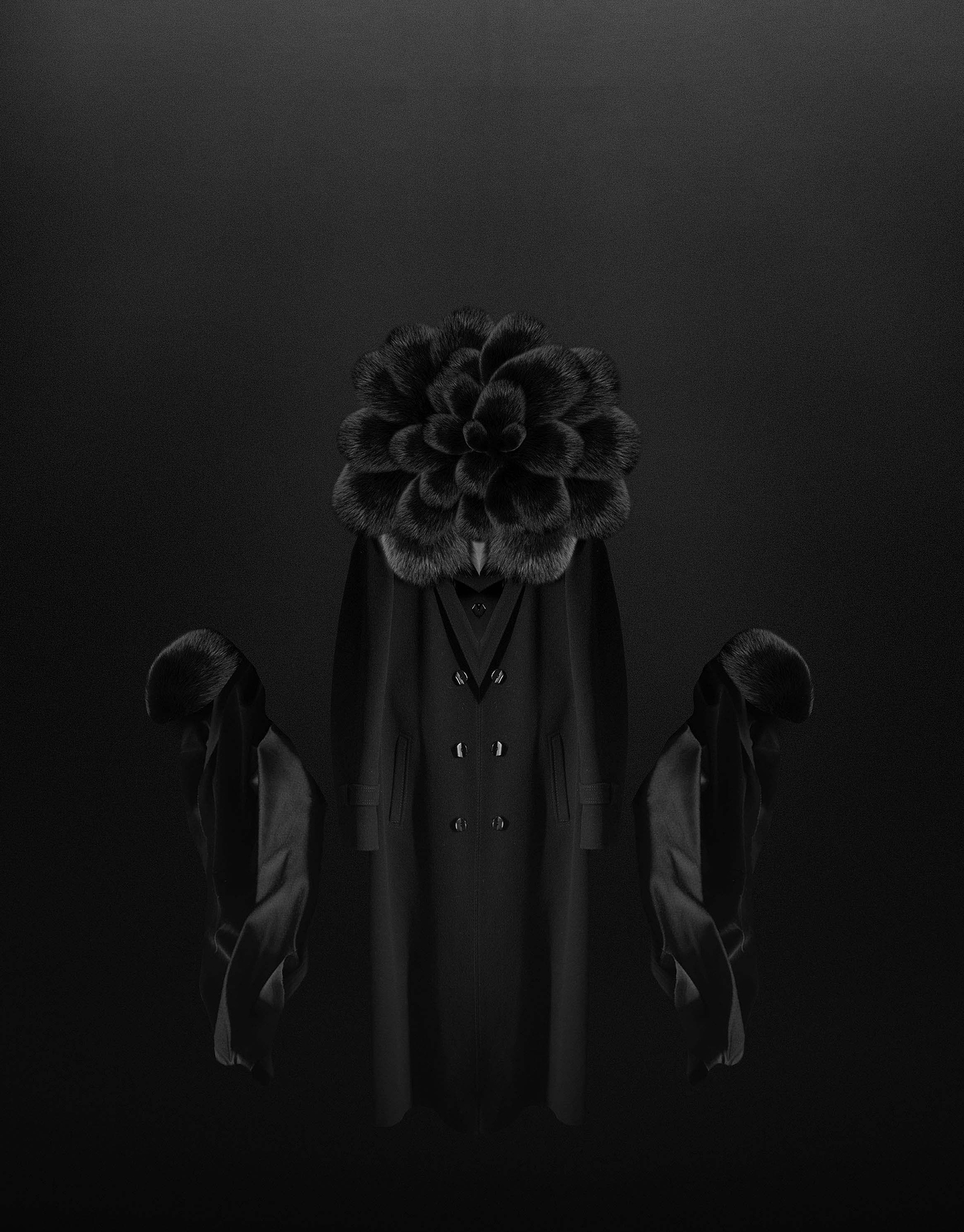
Do you have a life philosophy? Does your creative practice fit in with this philosophy?
My motto in life since I was little has been „Then die“ (in response to the question; What is the worst that can happen?) This motto has brought me to special places, has led me to special people and has pushed me to do things that I was initially afraid of. This sounds a little heavier than it actually is because of course I don’t want to die…
I also try to live a healthy life by looking after my body, but also my mind. When they are in balance, the creative work can flow more easily.
However, I am aware that black cannot do without white. There are days when everything goes against the grain, when I don’t understand the world. These “dark” days can also give me inspiration. This makes me wonder what happens when everything is in perfect balance. Could I still make art?
Have you ever had a moment when you questioned your career entirely?
Of course, everyday.
How has covid affected you and your art?
Practically speaking, because of the pandemic my part-time work as a teacher was largely canceled, and therefore, I had all the time in the world with my good old all-time favorite friend; My Art.
It felt like home. I finally had some time to take a step back and see from a distance what I had been doing all these years – only creating, with no real structure or plan. I decided to invest some time in organizing all of that work and create more structure moving forward.
I was also able to create a bit of a platform for my work and communicate with a small but appreciative audience which I feel extremely grateful for, especially during these times.
How do you think the art world will shape in the future?
In the same way it has always done.

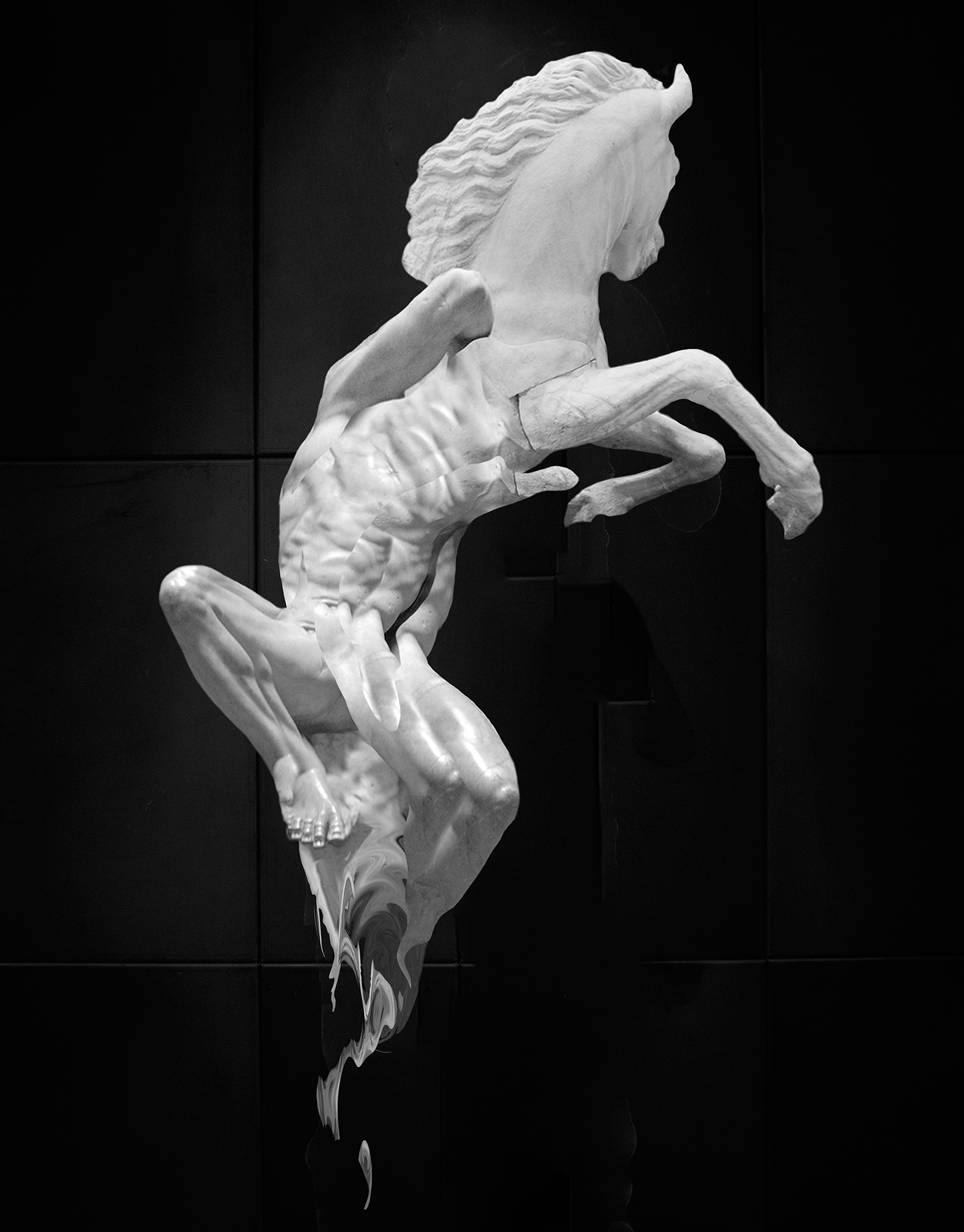
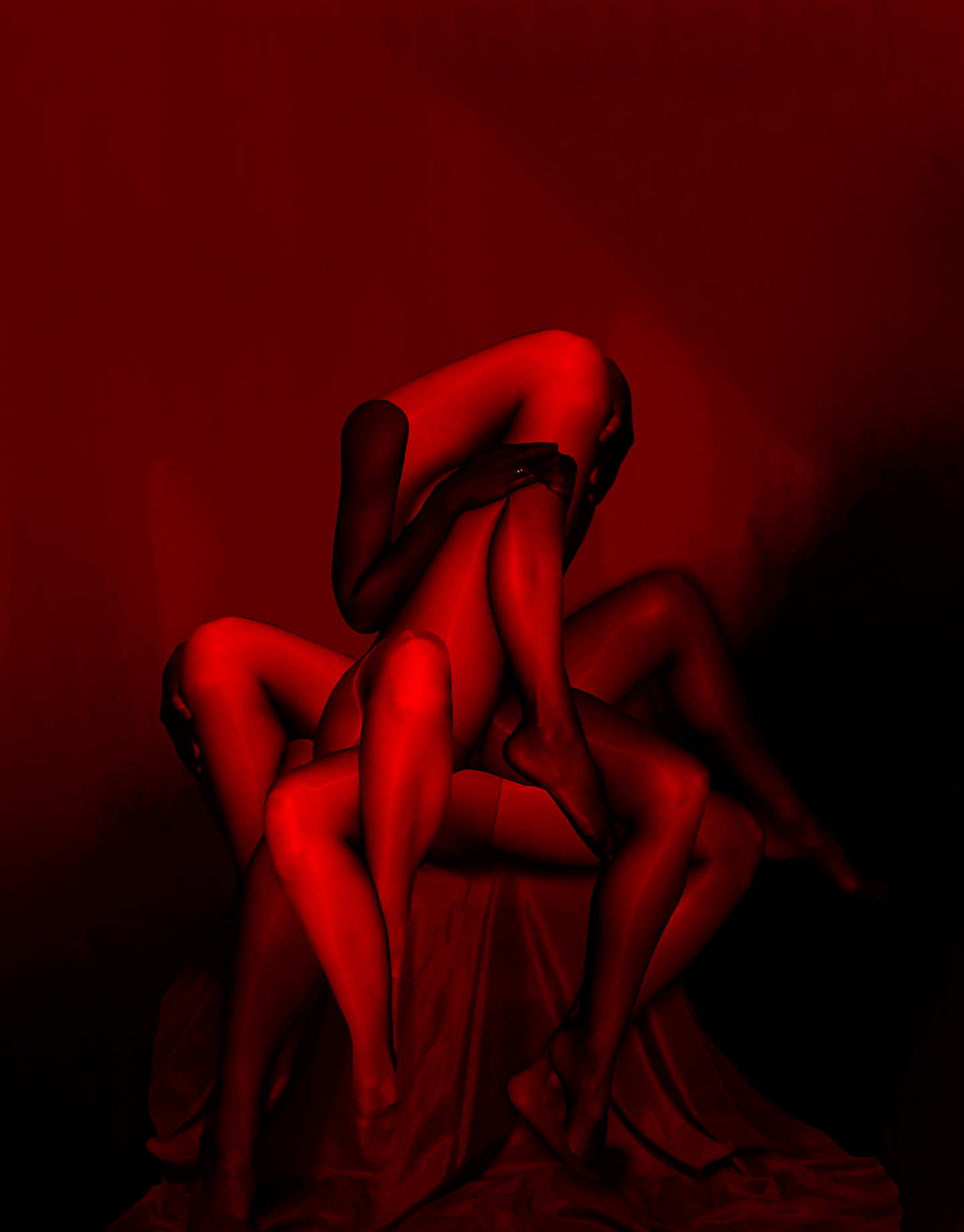
What’s next?
I am currently doing research on how I can bring my 2D digital work back into a 3D reality. Next to that, I want to create a solo exhibition with the biggest prints possible.
Instagram Noortje Stortelder: @noortje_stortelder
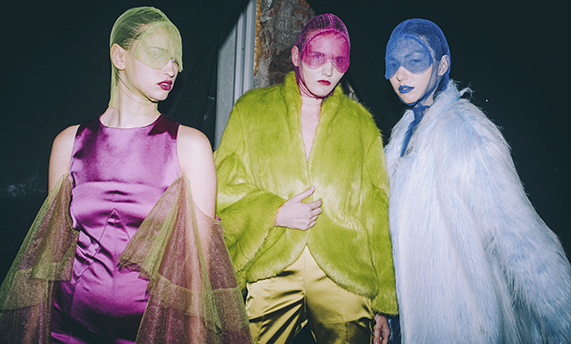
In the previous part we’ve started reviewing trends spotted this season at Mercedes Benz Fashion Week Russia, which ran phygitally from October 19 till 23. Having figured out how new femininity and gender fluidity are mirrored in the designers collections, we are proceeding with the rest of the trends.
F U T U R E I S C O M I N G
Humankind has always wondered what the future might look like. While many of us tend to have a more positive vision of tomorrow, some highly sensitive and thinking individuals like artists and scientists often suggest their anti-utopian views. One thing’s for sure, whether wonderful or terrible, the future will be different (and it will never reach our minds). Nevertheless, it’s so exciting to think how things can be. Why not daydream?
N.Legenda
Designer Olga Kapitonova, the founder of N.Legenda, suggests that the future is already here. At least, the models walking the runway at N.Legenda latest fashion show made us think we’re ready to go into outer space. No, they didn’t wear any space suits, but the colours featured — corrugated silver, metallic petrol, and galaxy blue — created the right sci-fi futuristic look. Tunics, suits, coats, and jackets from the N.Legenda SS 2021 collection are also rather agender, which broadens the scope for experiments.
Participants of ‘Fashion a la Russe’ project
Participants of the Krasnodar-based ‘Fashion a la Russe’ project boldly forecasted the vogue trends for the upcoming season. Kazakova Olga suggests that attached decorative prints ideally match flower frocks (some heavy boots like grinders are preferred so that the entire look doesn’t look fruity). Klimovskikh Valeria (KLIMOVSKIKH) prefers adding mysterious symbolic elements to the outfits, while Nadezhda Belousova (ValNa Fashion) bets on the hand-crafted capes that resemble a fishing net.
B&D Institute
All new is well overlooked past, everybody knows it. So to come up with fresh ideas in fashion you’d better ‘confer’ with some acknowledged couturiers. Just like the students of the Moscow Institute of Business and Design (B&D) did. Inspired by the figure of Alexander McQueen, his aggressive and vulnerable, romantic and passionate, and just extraordinary manner, they created a series of controversial and highly stylish outfits made from the biodegradable material. ‘What does the future of fashion look like?’ — the B&D students ask the viewer and immediately respond. ‘It’s hardly possible to explain. Just watch’.
LOKOTO
The motto for the new collection by LOKOTO could be: ‘Future’s not everybody’. In line with the early 20th century avant-garde artists, Lena Anikeeva, ex graphic designer and LOKOTO’s CEO, decided to cut off the extra to prepare for the bright future. Just three colours of the basic palette chosen (red, black, and white), direct lines, and clear geometrical shapes — the recipe for success seems easy. Lena Anikeeva finds that clothes are like architecture — it’s the silhouette and convenience that are of primary importance. And we couldn’t agree more.
kØd
Another version of the future a la avant-garde belongs to the Ukrainian-born brand kØd (Dutch for ‘flesh’). The latest collection of the brand stands out through a series of careful red stitches, thorough colour selection (the trio chosen by LOKOTO plus blue), and unexpected accessories. So, forward into the future, with some flowers in your hand?
T R I U M P H O F T H E C O L O U R
Spring and summer periods seem the perfect time to dress brightly. Sounds easy, doesn’t it? Yet just a few of us dare to express themselves through an intense colour palette. Taking an example from some fashionistas might help.
1377
Ode to colour green in the new collection by 1377. Although newly-minted (tailor Sasha Zhurina founded 1377 three years ago in Volgograd), the brand regularly takes part in major fashion events worldwide such as Paris, Shanghai, and Tbilisi Fashion Weeks. The upcoming spring promises to be enchanting with a broad green colour spectrum suggested by the designer: emerald, pistachio, pine, moss, sea green etc. Loose shirts and coats and jackets emphasize the laid-back mood of the collection, while the only female mannequin featured shows 1377 is a menswear brand (rather unisex at heart, though).
TSIGANOVA and Konyukhov Art
Victoria Tsiganova is not only a prominent singer, but also a designer. Her latest collection has been issued in collaboration with the famous Russian traveler Fyodor Konyukhov, who just like many gifted people has various genii. Apart from traveling, Fyodor creates paintings, which inspired TSIGANOVA to set up a very colourful vivacious series devoted to his art. The designer isn’t afraid of bold combinations of colour and styles, she also generously embellishes her outfits with prints and patterns. That’s how an artist’s imagination might probably look like.
Annais Yucra
The Peru-based designer Annais Yucra names herself an ‘artivist’. In her collections she calls for freedom of artistic expression and raises social issues. The SS 2021 by Annais Yucra is built upon colour blocking principles, yet the colour palette engaged is the very definition of tenderness. All shades of marshmallows are featured in the garments, while the cuts either follow the body shape or flirtatiously conceal it.
Maison Kaleidoscope
Taking on the role of a jungle dweller? Only green lights with the new collection by Maison Kaleidoscope. Fabrics from different parts of the world such as Egyptian cotton, Italian viscose, and Australian wool fed into the wild animal kingdom with every kind of flamingo, cobra, cheetah, and tiger present. No, it looks nothing but a masquerade, no exaggeration here. Just elegant facetious looks moderately spiced with spots-and-stripes prints, feathers, and embroidered fauna silhouettes. Trends spotted: highly-set cloche hats from the 1920s and woolen balaclavas.
B A C K T O T H E R O O T S
A few Yakut designers are on the list at MBFW this time. Together with some other couturiers they willingly show their belonging, praising the native cultural practices and making them available to the wider public. Finding inspiration in the local is a new auspicious trend, which is clearly manifested in different fields of visual arts (fashion is no exception).
Marfa Fedorova
Returning to the roots in the view of Yakut designer Marfa Fedorova initially means getting closer to nature. Reminiscing about the beauty of home boreal forests, Marfa Fedorova introduces purely natural hues within her new collection: e.g. sky blue, pine, sandstone, and clay. If it’s a choice, just loose cuts are preferred. And the sweetest ushanka-hats in tow.
050
‘саһарҕа’ (Yakut for ‘sunrise’) is the first collection by the brand 050 to be performed on the principles of upcycling. Old vintage fabrics have formed the basis for a series of mostly snow-white authentic garments. Much focus on details plus unusual tricks like tied-up ribbons instead of shoes on feet. ‘Culture keeps on thriving, rebirthing out of the previous forms of life’ — so goes the 050 statement.
SOLKO
Another Yakut brand SOLKO doesn’t get stumped by the work-life balance issue. The new collection by SOLKO features smart dresses, raincoats, skirts, and suits that a woman can wear both for work and leisure. Warm intense shades of the garments together with a ‘frosty’ makeup (apple cheeks, red lips, and white skin) enhance the vigor and decisiveness of the owner. Shirt collar is a new trend.
LES by Lesia Paramonova
A completely different vision of the call of nature was presented by designer Lesia Paramonova. Her brand ‘LES’ (Russian for ‘forest’) went pagan this season paying special attention to rituals. Images of birds symbolize freedom and cohesion of matter and spirit, while beads on bag handles might attract good fortune. The colour palette is no less exciting: cold hues like blue and gray stand for water, while warm and tender ones embody spring and warmth and blossoming flowers.
That’s it for now. See you at the next MBFW in spring 🙂
All photographs provided by the press-office of Mercedes Benz Fashion Week Russia
Right before we start, let me remind you of the basics. Mercedes-Benz Fashion Week Russia or MBFW, for short, is a major fashion event in Russia, CIS, and EMEA (at least, under the version of the organizers), which happens biyearly, in spring and in autumn.
If you managed to join the April 2020 season of the Fashion Week, you could see what a success it was: although entirely running online, the three-day event attracted about 830,000 spectators. Therefore, moving the program online proved to be a natural solution for MBFW promoters in October. However, almost half of the fashion shows this time took place physically at 8 Moscow venues. No, excluding the main one, Moscow Manezh, situated a stone’s throw from Red Square. Still there were some interesting locations like Moscow Museum of Fashion and the spacious ‘Nadezhda’ loft in the historically significant city trade district.
To attend the shows you as a fashion lover or a buyer or a journalist (whatever) needed an invitation, signing a verbal promise to comply with the preventive measures against COVID-19. If you more felt like staying at home and having settled yourself comfortable enough, watching an online stream, it was a massive hit, too. High-quality videos of the shows, including close-up shots and backstage footage were available to the guests through various platforms such as the official website of MBFW and the Russian popular social network VK. Another attractive option was to view some additional news and entertaining content provided by the fashion influencers, stylists, and other folks from the local world of vogue via TikTok.
So back to MBFW program. 74 designers from six countries showcased their collections in the autumn edition of the event, including the US, the UK, Argentina, Peru, and Indonesia. As for the Russian part, it wasn’t just Moscow-driven. Saint-Petersburg, Krasnodar, Sochi, and Yakutsk have proudly presented their natives (and hosted the fashion shows themselves). This season of MBFW was mostly about clothes — the only exception that comes to mind was the Brevno eyewear brand, which showed the step-by-step process of the goods manufacturing in a video presentation. Such major figures of the Russian fashion industry as Igor Chapurin (CHAPURIN) and Elena Souprun (ELENA SOUPROUN) were on the list together with some aspiring undergraduates of the HSE Art and Design School and the B&D Institute, both Moscow-based. In order to support young professionals under the economic recession MBFW organizers enabled 13 labels to take part in the event without paying any entrance fee. So there was no shortage in young up-and-comers this time.
Though relatively young, Russian fashion industry is worth maintaining one’s focus on it. While some couturiers prefer mimicking European fashion trends (successfully, I must say), others decide on demonstrating the authenticity of the Russian DNA and focus on symbolism and national motifs. I wouldn’t like to talk in general terms (it’s hardly possible even less), however, some trends can be spotted. Here are a few insights of what Russian fashion industry breathes today.
PART 1
N E W F E M I N I N I T Y
Mercedes-Benz Fashion Week Russia has never divided its seasons into male and female collections. Not that gender-fluid clothing was widely spread in Russia (quite the opposite, it’s just on the up — more on that later), but femme fashion is still considered the prevailing one. So it’s the male outfits that usually accompany women’s fashion shows, and not vice versa. In that light it’s not a big wonder that the issue of femininity remains relevant. Who is she, the ideal woman? Sounds Jungian and utopian, but always excites people’s minds. This is how MBFW’2020 participants see the answer to this question.
The name of Elena Souprun’s SS 2021 collection ‘Bricolage’ speaks for itself. Just like the process of bricolage implies creating objects using different kinds of materials found, the new collection by ELENA SOUPRUN displays perfect integration of local motifs into a modern image. Chinese silk and moiré and Uzbek national adras fabrics formed the basis of the label’s outfits. Loose shirts, broad sashes, laidback palazzo-pants, and kimonos call for a careful selection of handmade accessories. Smells like East? Yes, but it’s also about the spirit of the Zeitgeist, independence, and infinite elegance.
![]() ‘Bricolage’ SS 2021 Collection by Elena Souprun. Courtesy of the brand
‘Bricolage’ SS 2021 Collection by Elena Souprun. Courtesy of the brand
![]() ‘Bricolage’ SS 2021 Collection by Elena Souprun. Courtesy of the brand
‘Bricolage’ SS 2021 Collection by Elena Souprun. Courtesy of the brand
![]() ‘Bricolage’ SS 2021 Collection by Elena Souprun. Courtesy of the brand
‘Bricolage’ SS 2021 Collection by Elena Souprun. Courtesy of the brand
K Titova’s latest fashion show might serve as a perfect example of conceptual completeness. Creative and self-aware women will enjoy stylish and practical garments by K Titova ingeniously performed in two colors only, blue and white. Plaids, patches, and flower silhouettes complete the image without overloading it. A bit off the point, a senior model was spotted walking the runway during the label’s fashion show. And that’s admirable!
![]() ‘Gardens of Secrets’ by K Titova. Courtesy of the brand
‘Gardens of Secrets’ by K Titova. Courtesy of the brand
![]() ‘Gardens of Secrets’ by K Titova. Courtesy of the brand
‘Gardens of Secrets’ by K Titova. Courtesy of the brand
![]() ‘Gardens of Secrets’ by K Titova. Courtesy of the brand
‘Gardens of Secrets’ by K Titova. Courtesy of the brand
Maison Esve decided to go artistic. Gloss, fringe, embroidered cardigans, and flirtatious skirts — the atmosphere of the 1920s has been perfectly retrieved. In the SS 2021 collection Maison Esve suggests its admirers to take on the role of the world-famous dancer Josephine Baker. But overall, it’s all about being spontaneous, open-minded, and enjoying life as it is.
![]() Maison Esve SS 2021 collection. Courtesy of the brand
Maison Esve SS 2021 collection. Courtesy of the brand
![]() Maison Esve SS 2021 collection. Courtesy of the brand
Maison Esve SS 2021 collection. Courtesy of the brand
![]() Maison Esve SS 2021 collection. Courtesy of the brand
Maison Esve SS 2021 collection. Courtesy of the brand
In the mood for something romantic? Then LUBOVI ‘Naissanse’ collection will tune you in right. Light shadows, transparent fabrics, pleated skirts, and fitted shapes create such a tender image of the ambassador of love and affection. What’s more down-to-earth but yet enjoyable, most LUBOVI garments are created from natural fabrics such as wool, cotton, and silk. By the way, the label’s title as well as the name of its founder Lubov translates from Russian to ‘love’.
KISSELENKO
Having taken a step in this direction together with ELENA SOUPRUN, we keep moving forward to the East. ‘Collection №47’ by KISSELENKO is nothing but an homage to oriental delicacy. 50 shades of black used in the outfits (I’m talking about anthracite, quartz, coal, and other rock hues) are counterbalanced with red lips and flawlessly white faces of the mannequins. The makeup of the models together with the high rolls on their heads leave no doubt: the story is about a geisha, but a contemporary one. She lives at the rhythm of the city and makes time for herself. Magnificent and laconic, ‘Collection №47’ comes in line with the philosophy of the brand, which may be described as intellectual freedom of expression. Founded by the designer Lilia Kisselenko in St. Petersburg 20 years ago, KISSELENKO was named the best Russian fashion brand by Vogue in 2000.
![]() ‘Collection №47’ by KISSELENKO. Courtesy of the brand
‘Collection №47’ by KISSELENKO. Courtesy of the brand
![]() ‘Collection №47’ by KISSELENKO. Courtesy of the brand
‘Collection №47’ by KISSELENKO. Courtesy of the brand
![]() ‘Collection №47’ by KISSELENKO. Courtesy of the brand
‘Collection №47’ by KISSELENKO. Courtesy of the brand
G E N D E R F L U I D I T Y
Unisex ready-to-wear garments have no longer been a wonder as a kind of way station between female and male fashion. But what about rewriting the history of vogue, enrobing men in outfits traditionally ascribed to women and the other way round? It’s the young designers who usually enjoy experimenting with gender in their collections. The results might be astonishing.
‘HARD 008’ by HSE Art and Design School
Fashion Department students of the HSE Art and Design School (Moscow) showed up at MBFW with their ‘HARD 008: THE EDGE OF SOMETHING NEW’ collection. Just as the title suggests, the new series is aimed at reminiscing about the past and coming up with new ideas for the future. Trench coats, T-shirts, and tops are featured both on male and female models being photographed in couples. Asymmetry, long trains, and discreet palette of colours define the spirit of the ‘HARD 008’ outfits.
![]() The Case Project by Marina Aleksashina_HSE Art _ Design School
The Case Project by Marina Aleksashina_HSE Art _ Design School
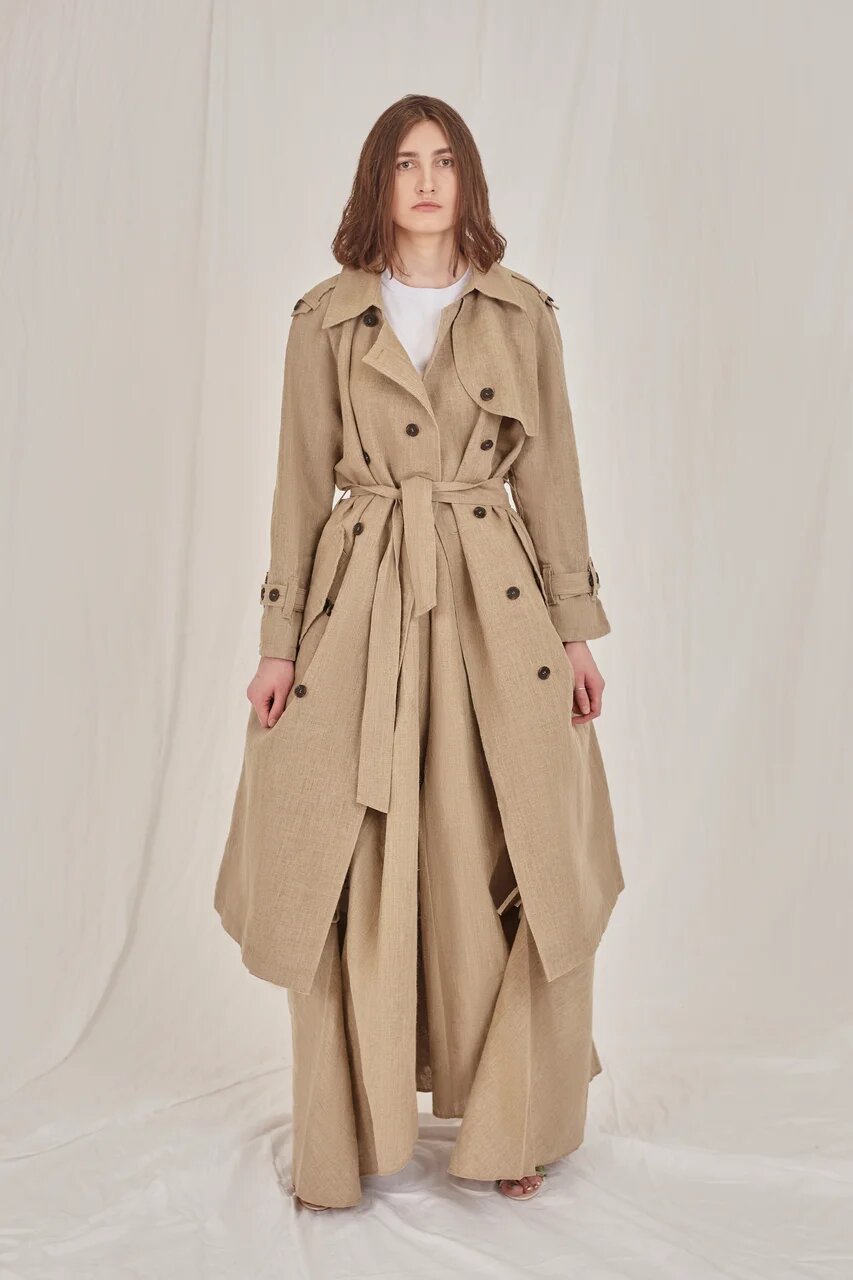
![]() The Case Project by Marina Aleksashina_HSE Art _ Design School
The Case Project by Marina Aleksashina_HSE Art _ Design School
![]() The Case Project by Marina Aleksashina_HSE Art _ Design School
The Case Project by Marina Aleksashina_HSE Art _ Design School
SERGEI SYSOEV
Meanwhile we keep on redefining fashion processes together with the Saint-Petersburg-based couturier Sergei Sysoev. The SS 2021 Ready-to-Wear collection by SERGEI SYSOEV isn’t just about dressing men and women in similar costumes that are marked by intimacy and sophistication. It’s also about the changing role of colour that loses its gender specificity. Intense magenta, noble navy blue, tender aqua marine — these shades are beyond the binary thinking and always ad rem. All you have to do is to get creative and match the colours properly. Bear in mind, such elements as tai dai and artistically designed rose-shaped prints will prevent the outfit from looking repetitive.
KRUZHOK
‘MOM’ collection by KRUZHOK is one of the bravest examples of gender fluidity demonstrated at the current MBFW season. It’s the superhuman with the distinctive feminine traits that serves as a prototype for the new collection. The colour palette is all lightness: peach, pistachio, and creamy hues. Large pockets, accented shoulders, A-line, and pencil skirts. Back to the 60s with its baby-doll image? Yes, in a way, and men can wear it!
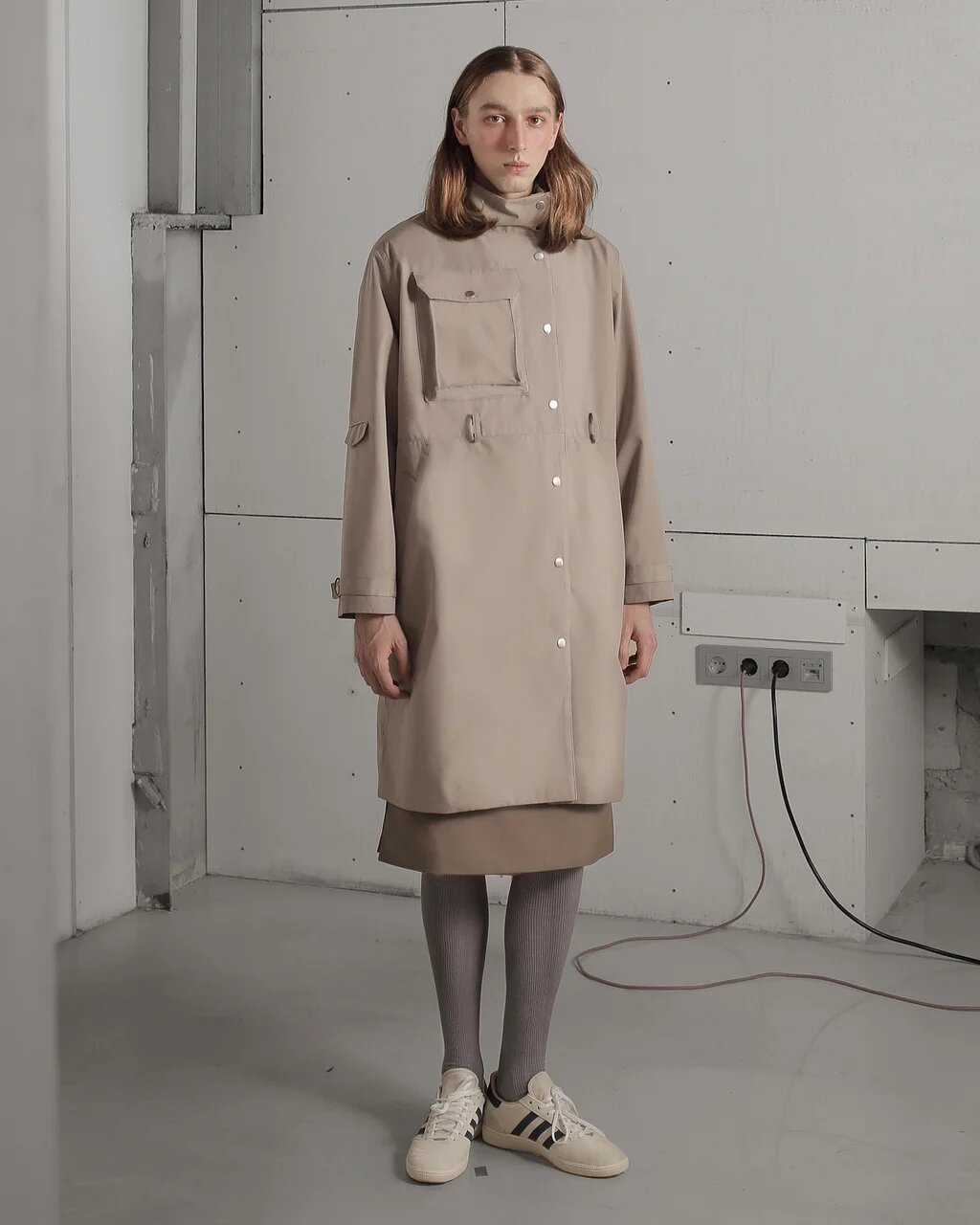
![]() ‘MOM’ Collection by KRUZHOK. Courtesy of the brand
‘MOM’ Collection by KRUZHOK. Courtesy of the brand
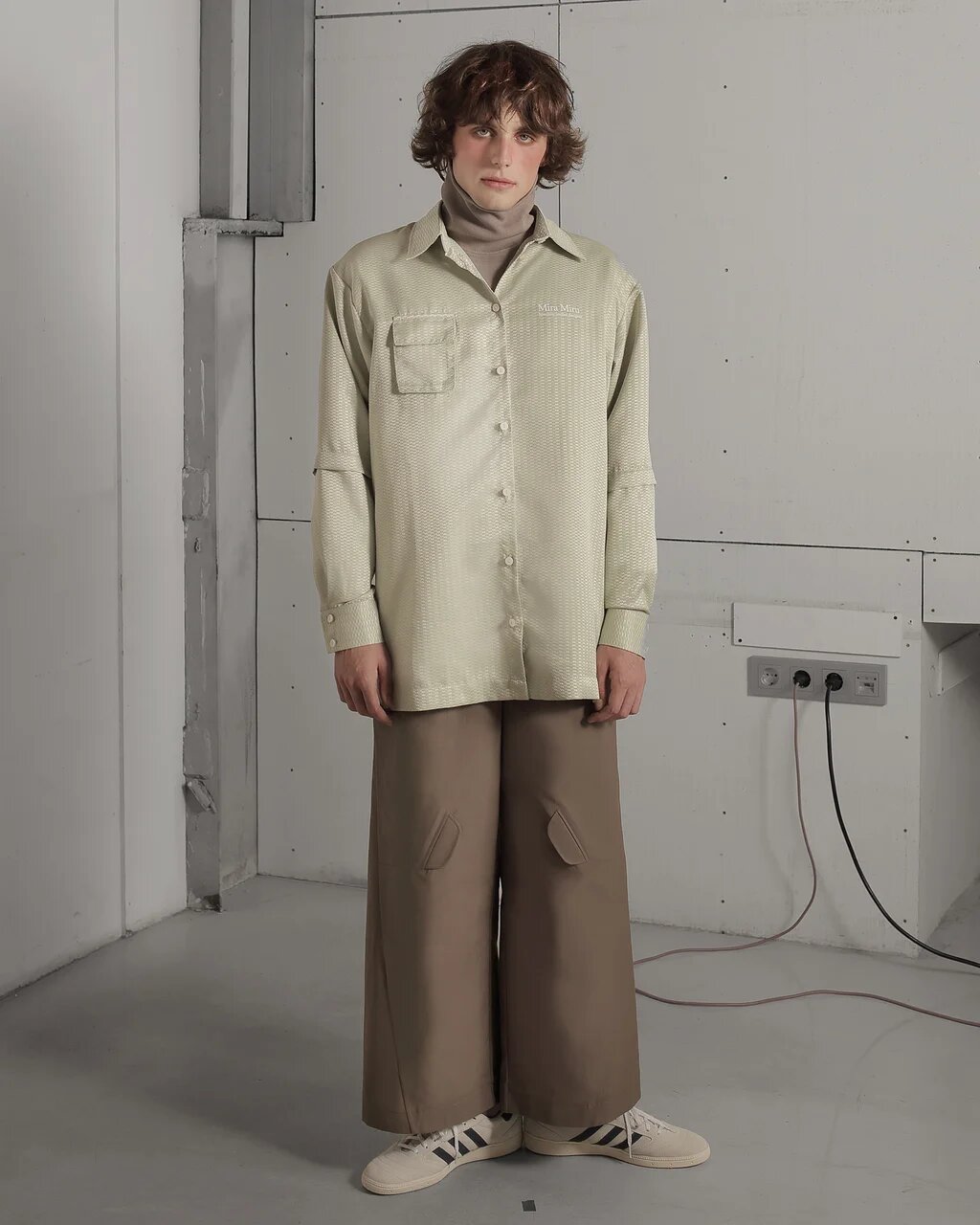
![]() ‘MOM’ Collection by KRUZHOK. Courtesy of the brand
‘MOM’ Collection by KRUZHOK. Courtesy of the brand
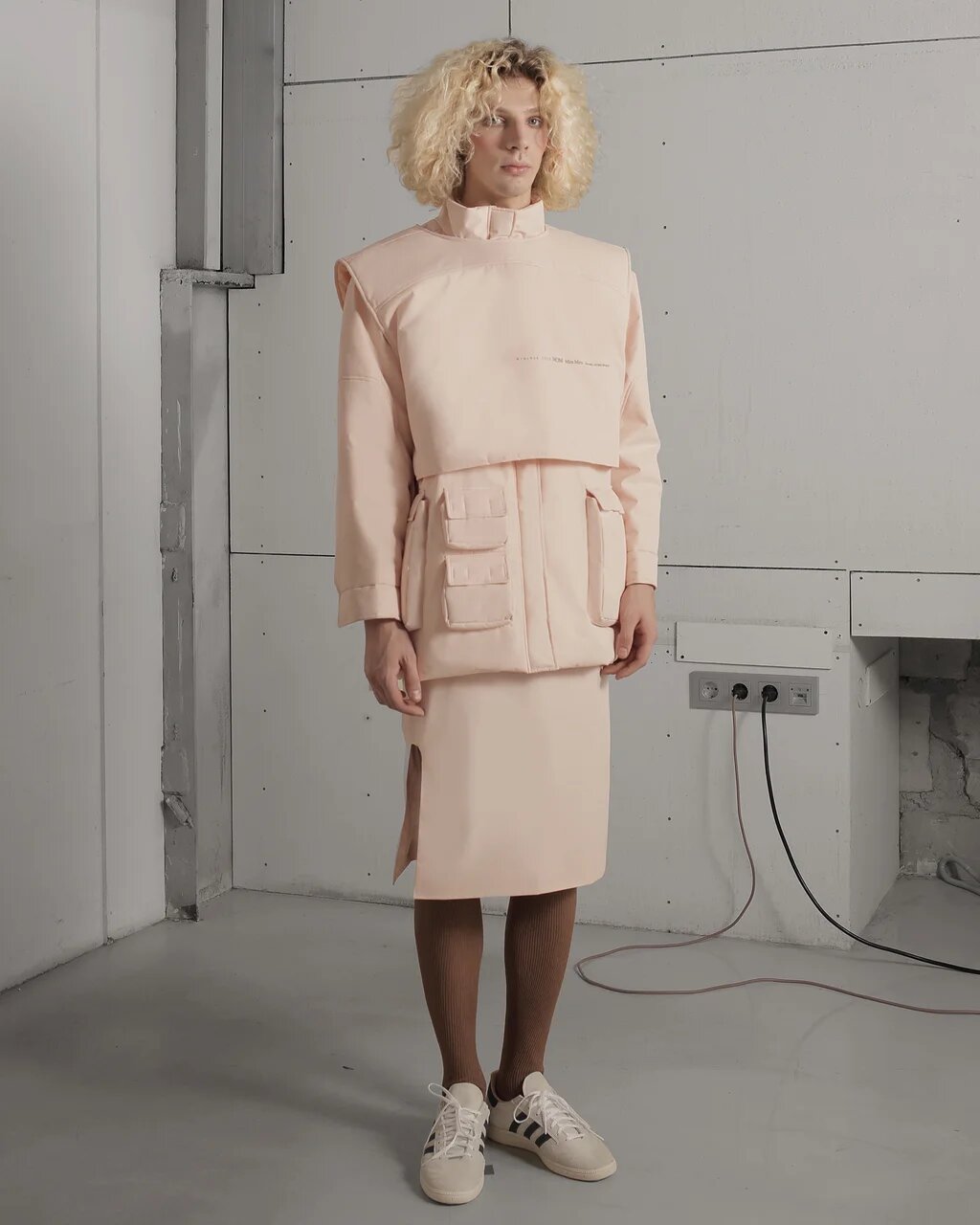
![]() ‘MOM’ Collection by KRUZHOK. Courtesy of the brand
‘MOM’ Collection by KRUZHOK. Courtesy of the brand
GILVICHUTE
Having prior discussed new femininity, it would be fair to talk of men. Designer Yana Gilvichute devotes her new series to the wild 90s (at least, in Russia they were like that, with a highly unstable Perestroika period). GILVICHUTE SS 2021 plays upon the well-known taste of confusion and nascent freedom. Unisex leather coats are still the historically established classic, while male bodysuits, jabots, and puffy sleeves promise to be another sensation, experimental and romantic at once. It would be hard to avoid the choice of color: excellently light blue, it reminds of the times when the dreams and hopes were as endless as the sky.
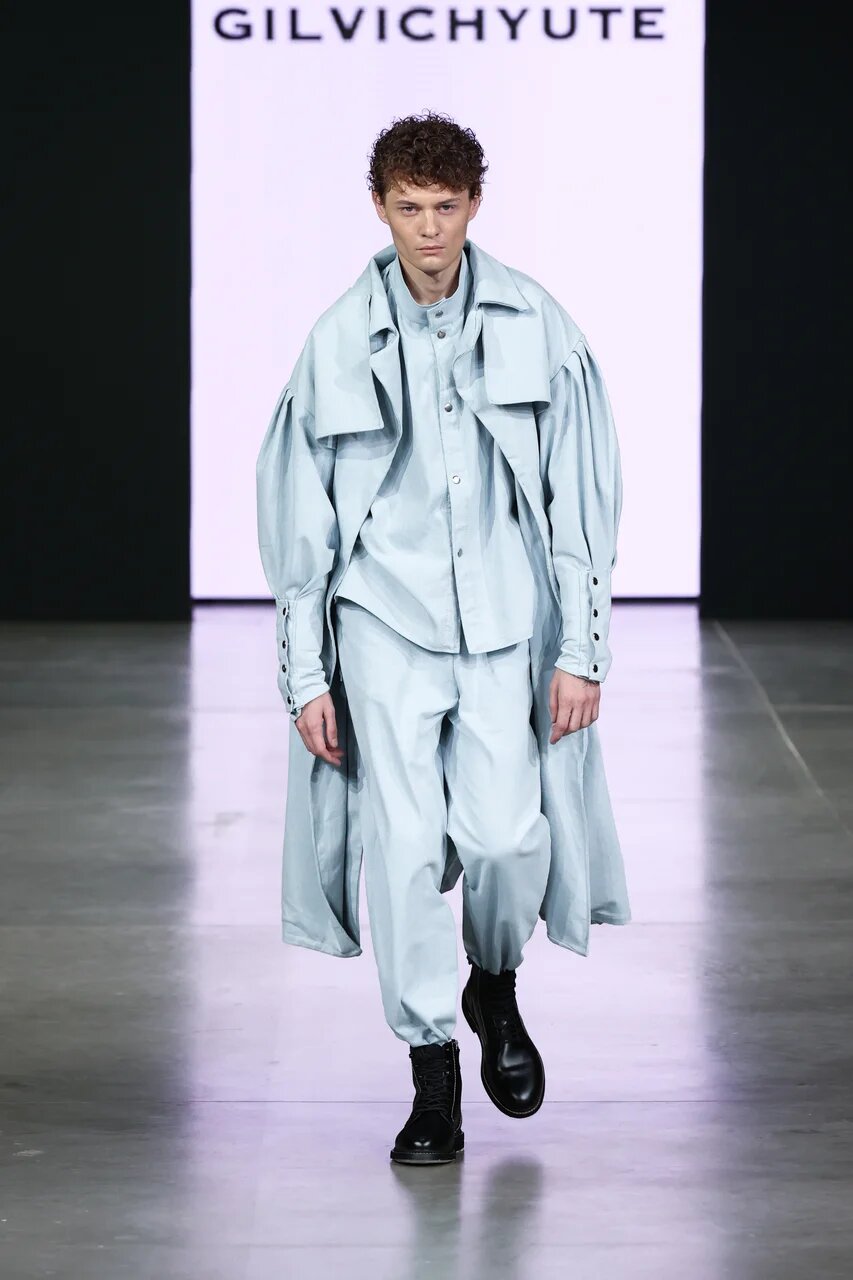
![]() GILVICHUTE SS 2021 Ready-To-Wear. Courtesy of the brand
GILVICHUTE SS 2021 Ready-To-Wear. Courtesy of the brand
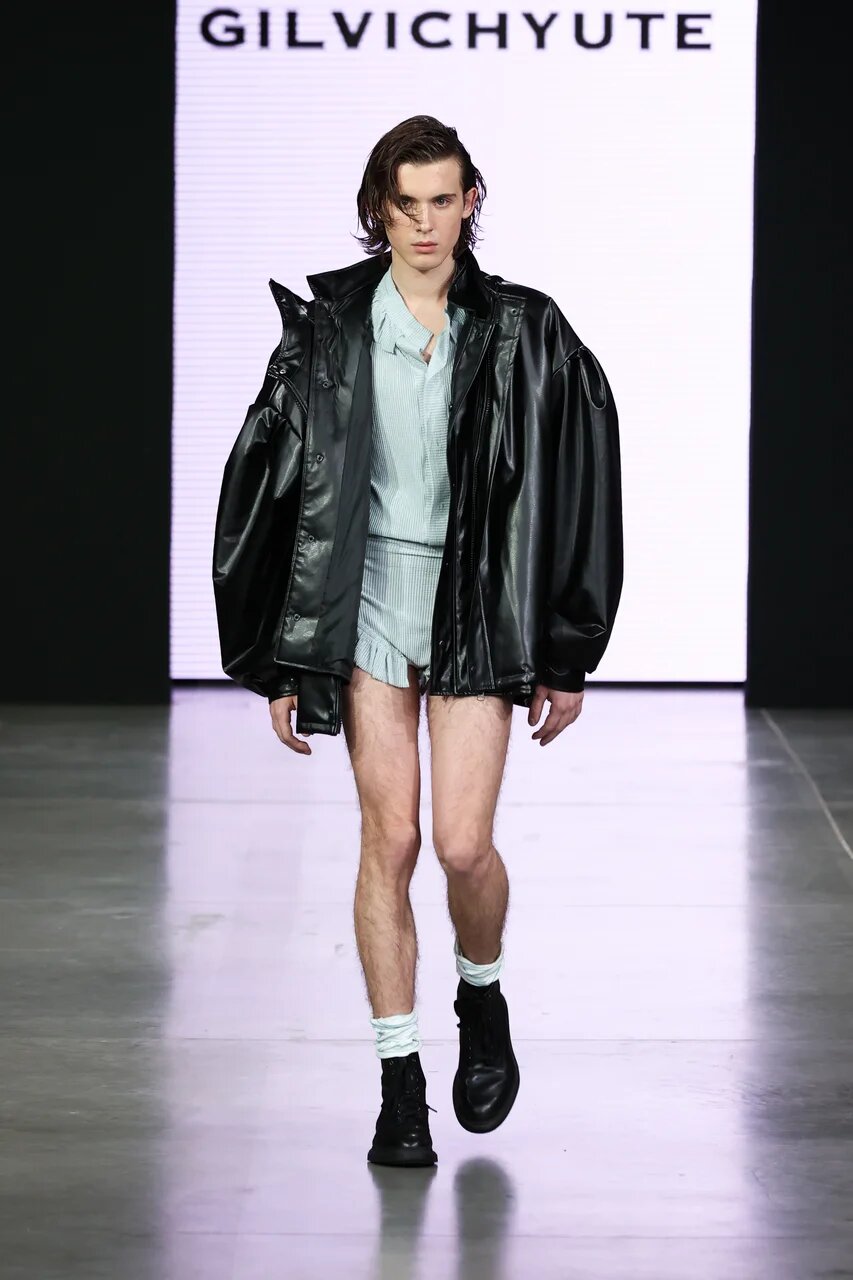
![]() GILVICHUTE SS 2021 Ready-To-Wear. Courtesy of the brand
GILVICHUTE SS 2021 Ready-To-Wear. Courtesy of the brand
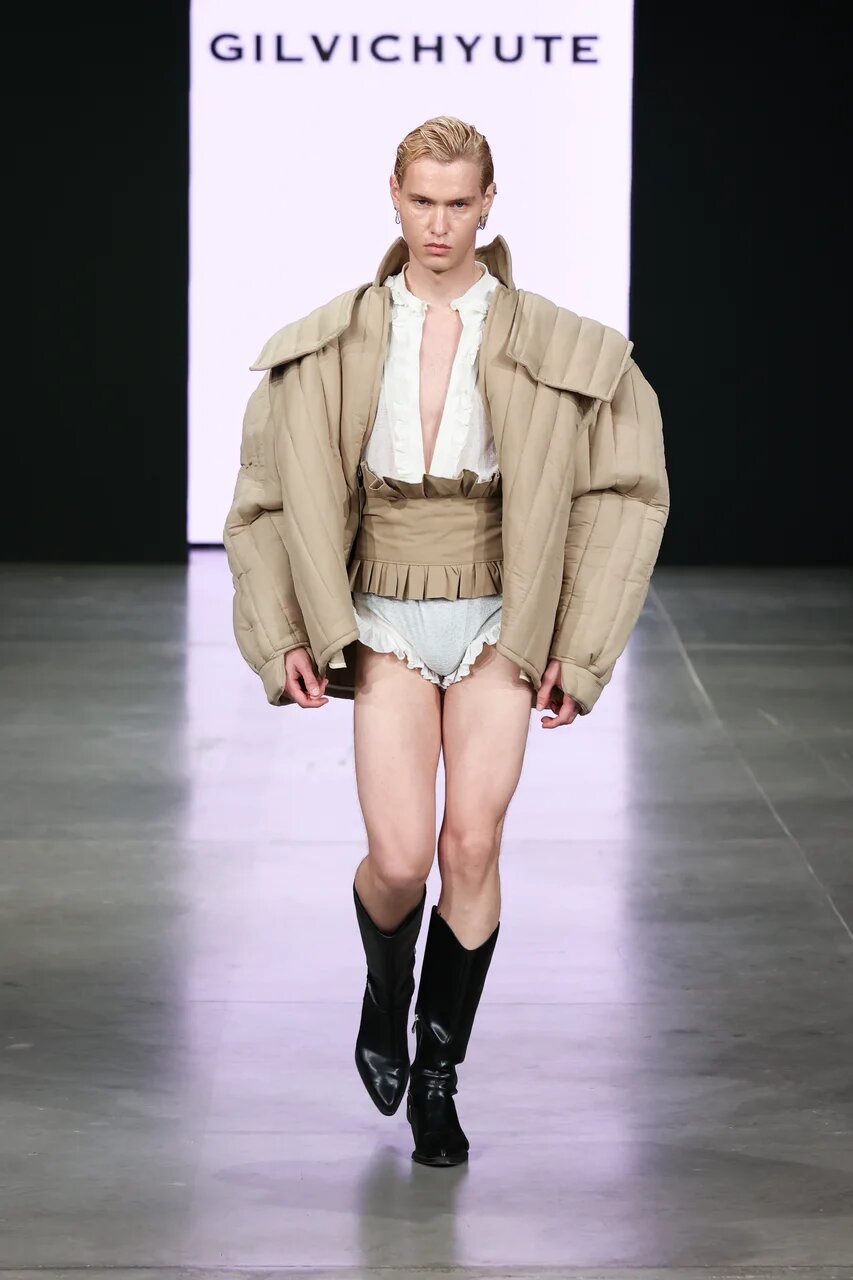
![]() GILVICHUTE SS 2021 Ready-To-Wear. Courtesy of the brand
GILVICHUTE SS 2021 Ready-To-Wear. Courtesy of the brand
To be continued in Part 2.
*All photographs provided by the press-office of Mercedes Benz Fashion Week Russia
She used to roam across the matchstick factory as a child, having left for a world trip with her family at 13. She usually mixes up words (finding herself quite dyslexic) and prefers visual narratives to the verbal ones. An amazing girl coming from a distinctive background, Alma Haser has decided to turn her life into art and magic. Learn more about her cubist, origami-structured works today.
![]() 01. From the ‘Cosmic Surgery’ series. Courtesy of the Artist_
01. From the ‘Cosmic Surgery’ series. Courtesy of the Artist_
Alma Haser was born to a rather creative family of a painter and a sculptor in the Black Forest (Germany). Her parents used to work on the territory of a matchstick factory in turns, thus, Alma and her brother were often on their own, making up and playing games and exploring the world around them. The artist recalls, it was her wild and free childhood that really shaped her.
‘We were very much given the freedom to experiment and use our imagination, which I believe is the bedrock of my practice now.’ (Alma Haser, from the interview with AnOtherMagazine, 2018)
![]() 03. From ‘I Always Have To Repeat Myself’ series. Courtesy of the Artist_
03. From ‘I Always Have To Repeat Myself’ series. Courtesy of the Artist_
![]() 04. From ‘I Always Have To Repeat Myself’ series. Courtesy of the Artist_
04. From ‘I Always Have To Repeat Myself’ series. Courtesy of the Artist_
Alma Haser got acquainted with photography while traveling around the world with her mum and her brother over 6 months (instead of attending middle school in the interim). She didn’t lose much, though. During the trip she tried shooting and modeling (for her mother, who is a keen photographer as well). Alma’s rising interest in the world of visual arts resulted in her entering Nottingham Trent University, where she graduated with a BA (Hons) degree in Photography in Art Practice in 2010. Fairly predictable, the artist tried using Photoshop during her studies, but realized soon, it wasn’t the only (and the best) way to manipulate the picture.
‘I preferred to do things by hand and assemble the picture off screen. It’s not perfect, it’s not crisp and clean, and that’s what I like about it.’ (Alma Haser, from the interview with AnOtherMagazine, 2018)
![]() 05. From the ‘Cosmic Surgery’ series. Courtesy of the Artist_
05. From the ‘Cosmic Surgery’ series. Courtesy of the Artist_
![]() 06. From the ‘Cosmic Surgery’ series. Courtesy of the Artist_
06. From the ‘Cosmic Surgery’ series. Courtesy of the Artist_
Having spent much time experimenting with self-portraiture, Alma liked the idea to bring other people in photograph. Thus, in the majority of her projects the artist focuses on creating multi-layered portraits. In her work Alma Haser combines such craft-related techniques as weaving, folding, cutting, stitching, and painting, finding them surprisingly relevant for contemporary photography.
‘I love making things, so I’ll often add other elements before, during or after taking a picture.’ (Alma Haser, from the interview with Photoworks, 2016)
![]() 07. From the ‘Cosmic Surgery’ series. Courtesy of the Artist_
07. From the ‘Cosmic Surgery’ series. Courtesy of the Artist_
![]() 08. From the ‘Cosmic Surgery’ series. Courtesy of the Artist_
08. From the ‘Cosmic Surgery’ series. Courtesy of the Artist_
Fascinated with Japanese culture and origami, in particular, the artist integrated paper folding into her creative process. For instance, in her debut series Cosmic Surgery Alma transformed parts of the subjects’ faces to place them back with a complicated modular construction. Re-photographing the final composition, Alma Haser received a completely different image, uncanny and futuristic in a way. Interesting enough, it’s the younger generation only, not their parents that the artist exposes to such kind of a metamorphosis. Why so? Here is the answer firsthand:
‘The people in the photographs represent the next generation from us — the ‘alien people’. The mother and father (the first generation) aren’t defaced, but the others (the next generation) are. Cosmic surgery is a playful statement on that.’ (Alma Haser, talking about ‘Cosmic Surgery’ series in the interview with Metal Magazine)
![]() 09. From the ‘Cosmic Surgery’ series. Courtesy of the Artist_
09. From the ‘Cosmic Surgery’ series. Courtesy of the Artist_
![]() 10. From the ‘Cosmic Surgery’ series. Courtesy of the Artist_
10. From the ‘Cosmic Surgery’ series. Courtesy of the Artist_
By the way, the title of the series Cosmic Surgery is a wordplay itself. And not just a play, but a play based on a slip. Alma misspoke the word once while discussing the topic of cosmetic surgery with her parents… and decided to name her project after that! The amazing thing is, Alma Haser managed to find her dyslexia a more useful way, fulfilling her artistic narrative with visual puzzles. Intentionally mixing up elements of the works, each time she arranges a new picture and new meanings.
![]() 11. From the ‘Twins’ series. Courtesy of the Artist_
11. From the ‘Twins’ series. Courtesy of the Artist_
Another series by Alma Haser really worth noticing is Within 15 Minutes, which is puzzle-based in the true sense of the word. To back the story a bit up, Alma has always been amazed by twins — their external identity and closeness to each other. She even devoted one of her prior series to this phenomenon, shooting two girls who, though not being sisters, experienced their made-up affinity posing together.
‘Intrigue and mystery need to be strong. It’s far more interesting to look at a portrait which doesn’t tell you everything all at once.’ (Alma Haser, talking about ‘Within 15 Minutes’ series in the interview with Visura, WPO, 2020)
![]() 12. From the ‘Twins’ series. Courtesy of the Artist_
12. From the ‘Twins’ series. Courtesy of the Artist_
For Within 15 Minutes (a time range during which twins are born) the artist photographed real twins to cut the portraits pictured into puzzles and blend them into each other a bit. Thus, we still have a couple of perfect pictures of twins, but there is something bizarre about each of them: e.g. three nostrils or a narrowed eye on the face. Sounds like an automatically generated image, right? Well, almost — in the series Alma intends to reverse the process of gene transfer, demonstrating how different, actually, twins can be.
![]() 13. From the ‘Within 15 Minutes’ series. Courtesy of the Artist_
13. From the ‘Within 15 Minutes’ series. Courtesy of the Artist_
There is also a project in Alma’s practice that stands out because of the focus suddenly shifted… to plants. In Pseudo the artist refers to plants as a metaphor for the fake, strongly believed to be true. Plants as a distillation of nature yield us a highly authentic experience, however, it’s plants again that people so often try to imitate. Here Alma Haser skillfully draws a link to the way we interpret and respond to information.
‘It relates to the way we hear, read or see things on the news. We tend to cherry-pick things we think we can trust and believe in’.(Alma Haser, talking about ‘Pseudo’ series in the interview with AnOther Magazine, 2018)
Speaking on the whole, Alma Haser is recognized (and loved) for her paper aesthetic, which has something of a gloomy mystery and a bedtime story at once. So contradictory and complex is Alma Haser herself as an artist.
![]() 16. From the ‘Pseudo’ series. Courtesy of the Artist_
16. From the ‘Pseudo’ series. Courtesy of the Artist_
![]() 17. From the ‘Pseudo’ series. Courtesy of the Artist_
17. From the ‘Pseudo’ series. Courtesy of the Artist_
![]() 18. From the ‘Pseudo’ series. Courtesy of the Artist_
18. From the ‘Pseudo’ series. Courtesy of the Artist_
P.S. Obviously, Alma’s projects mentioned above haven’t been left unnoticed — the artist received 3rd place People’s Choice Award for Cosmic Surgery series at the Foto8 Summer Show in 2012. Her Within 15 Minutes series debuted at San Francisco PHOTOFAIRS and was on display at Photo London in 2018. In addition, British Journal of Photography called Alma Haser one of the best graduates in Photography in 2010.

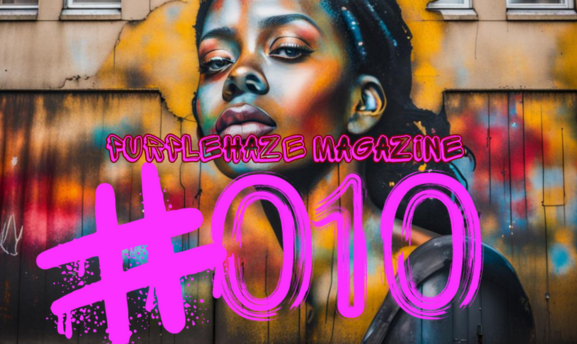

Neueste Kommentare